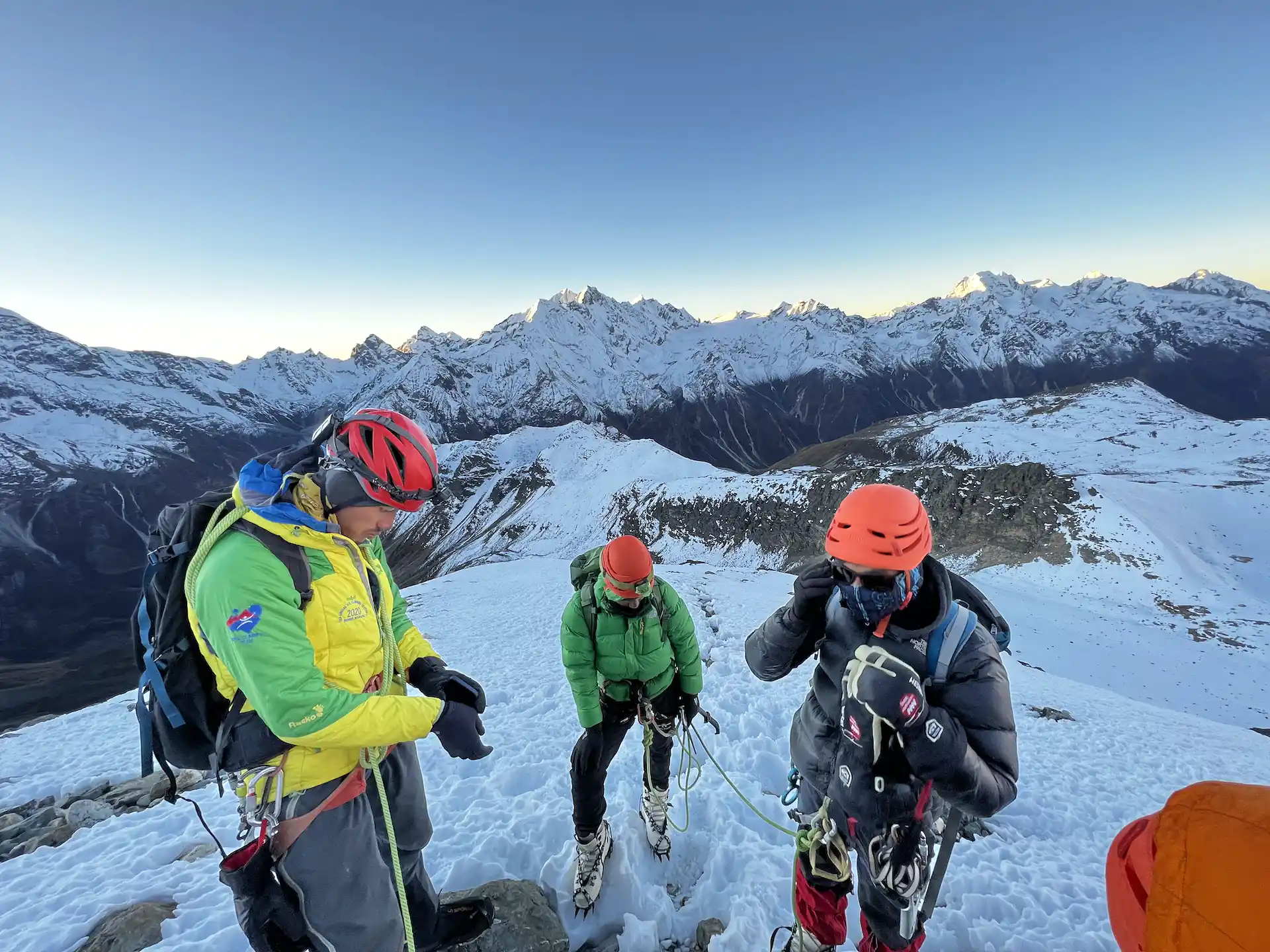
Trek the Langtang Valley to Summit Yala Peak (5500m)
Climb one of the few non-technical peaks in Nepal and experience the mighty Himalaya away from the crowds
What's Included?
Activities & Certified Guides
All itinerary activities with you'll be led by local, expert, English-speaking mountain guidesHotel & Teahouse
2 nights in Kathmandu, 8 nights in teahouses and 1 night campingMeals
Welcome and farewell dinners in Kathmandu and 4 meals while trekkingEquipment
Crampons, ice axe, ropes, helmet and harness will be providedTransfers
Airport transfers and everything in between, a porter to carry your trek luggage, entry fees and permitsSmall Like-minded Groups
Solo-friendly by design, join our small n’ sociable groups of up to 10 like-minded, active and outdoorsy people…
What's it like?
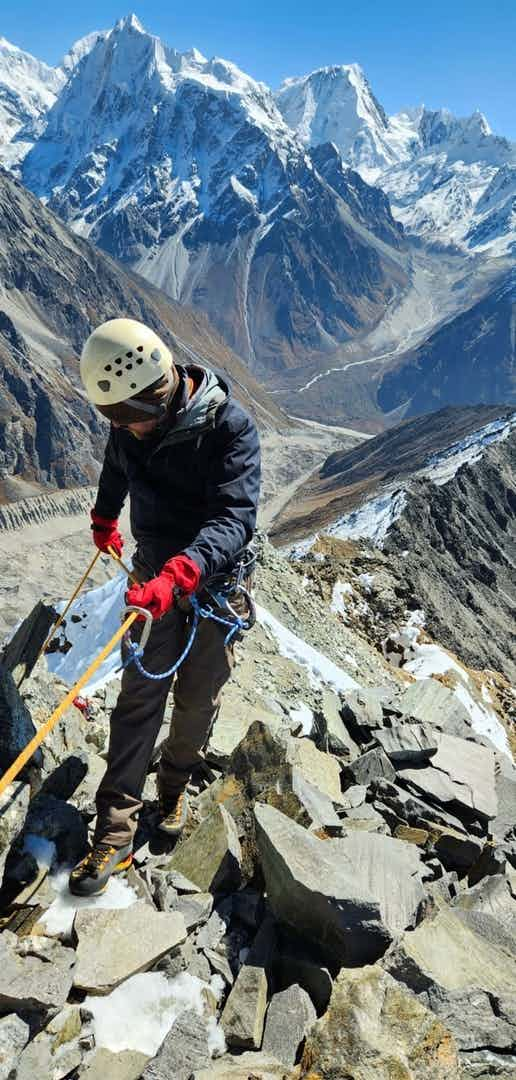
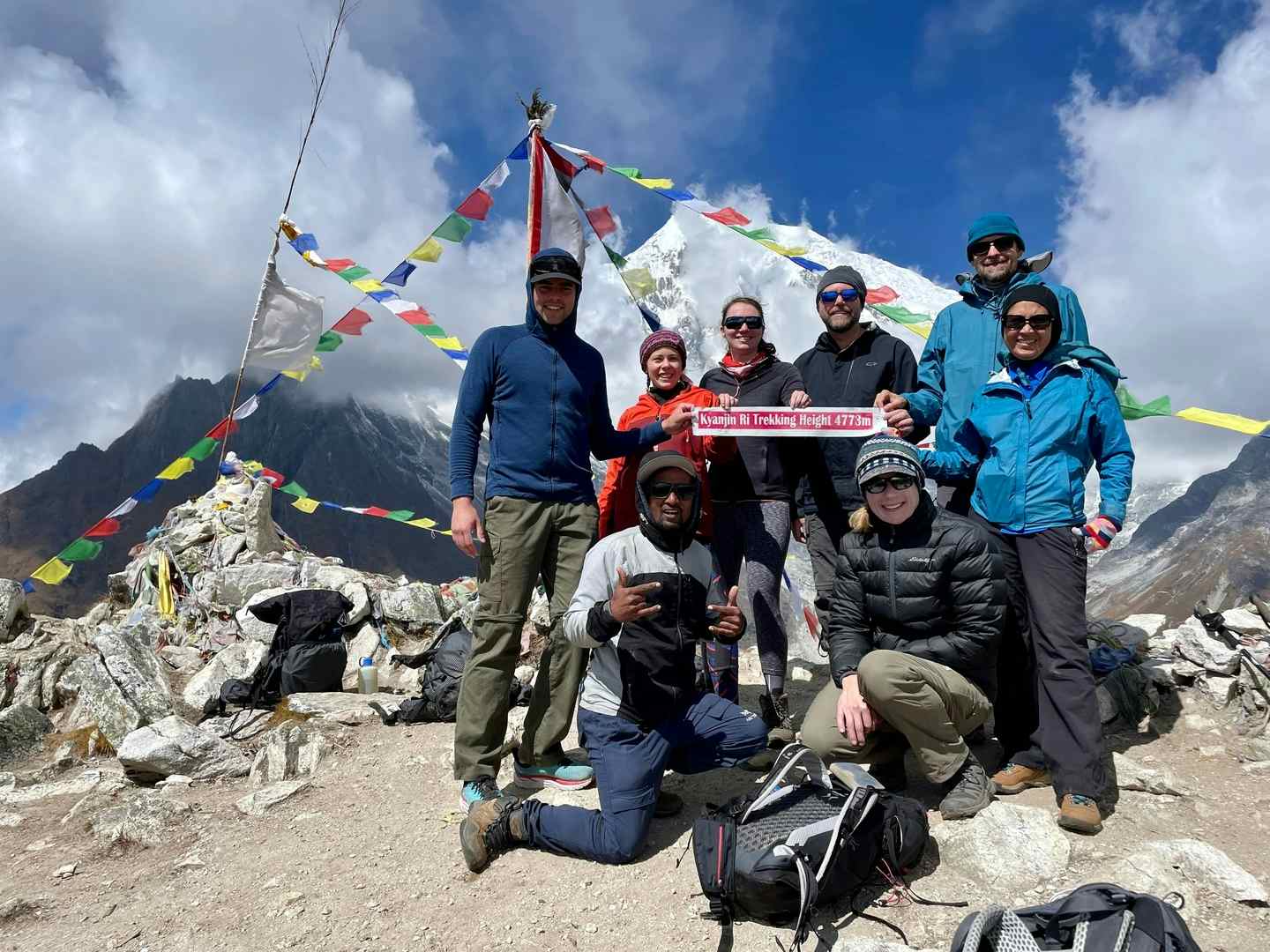
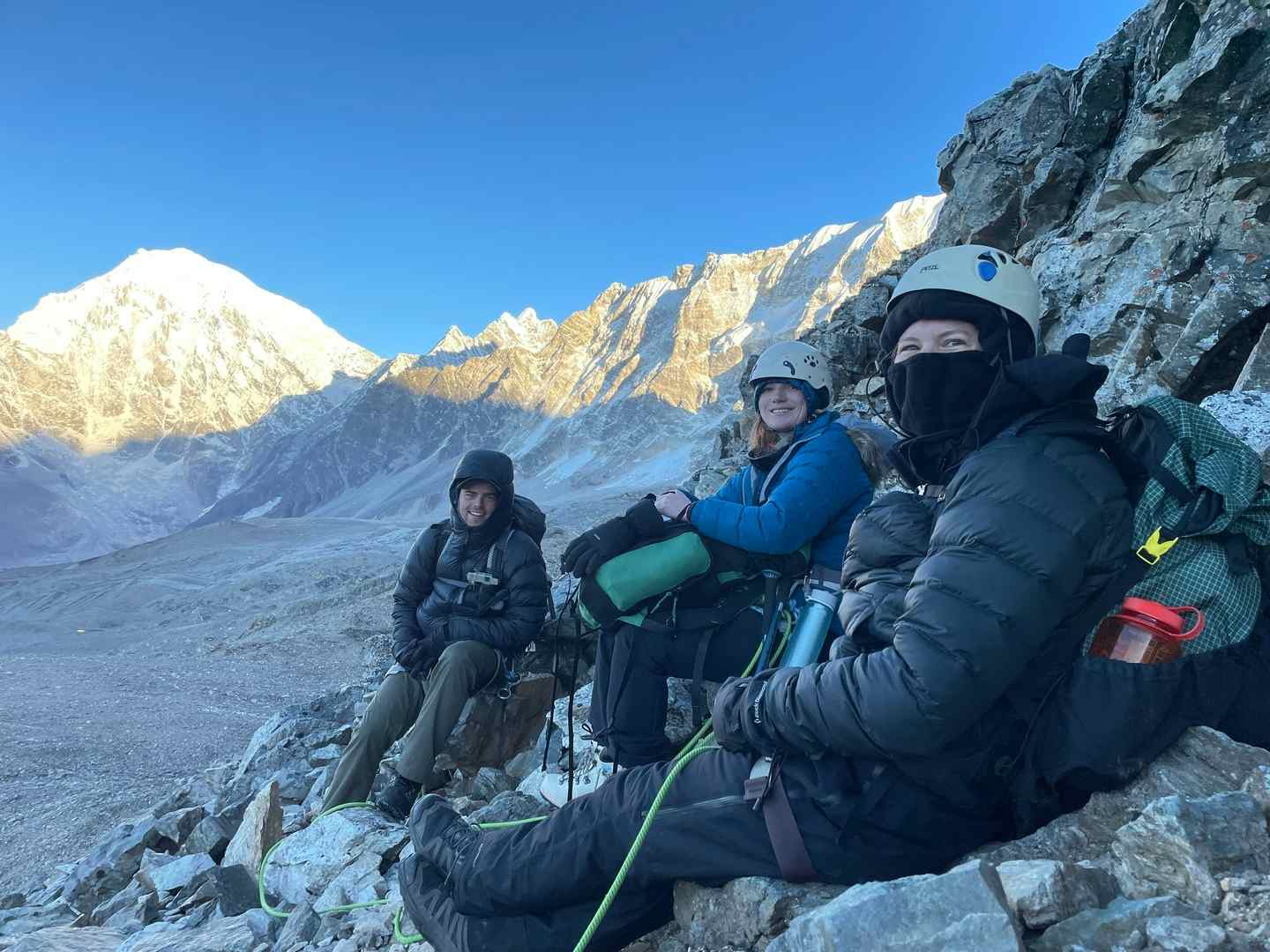
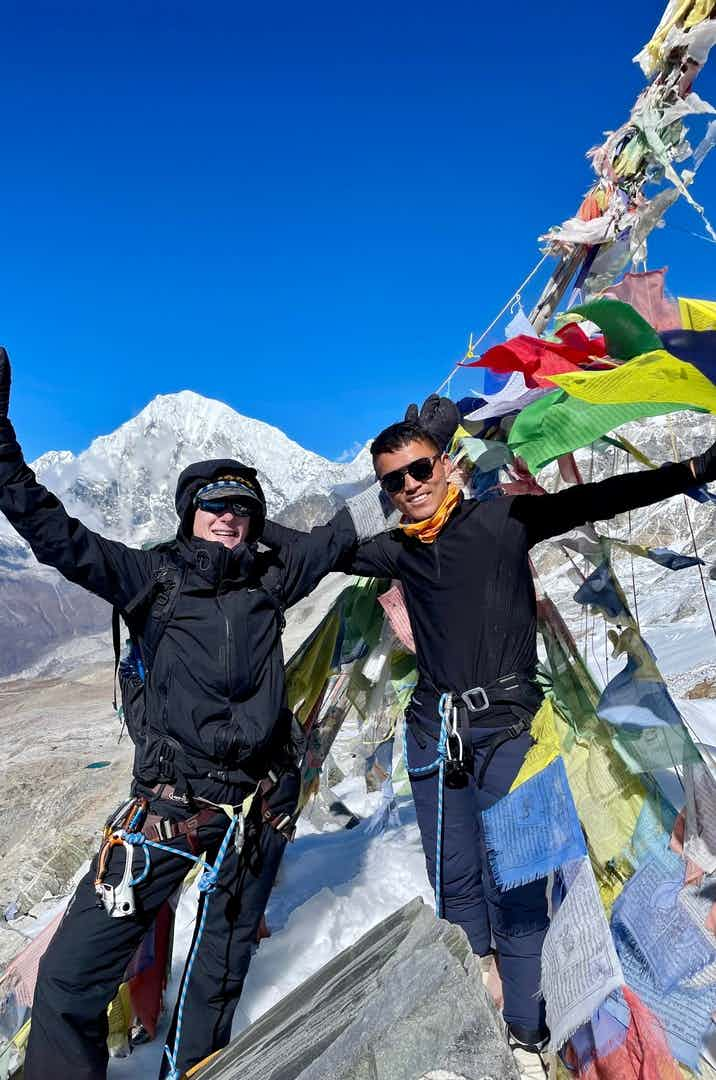
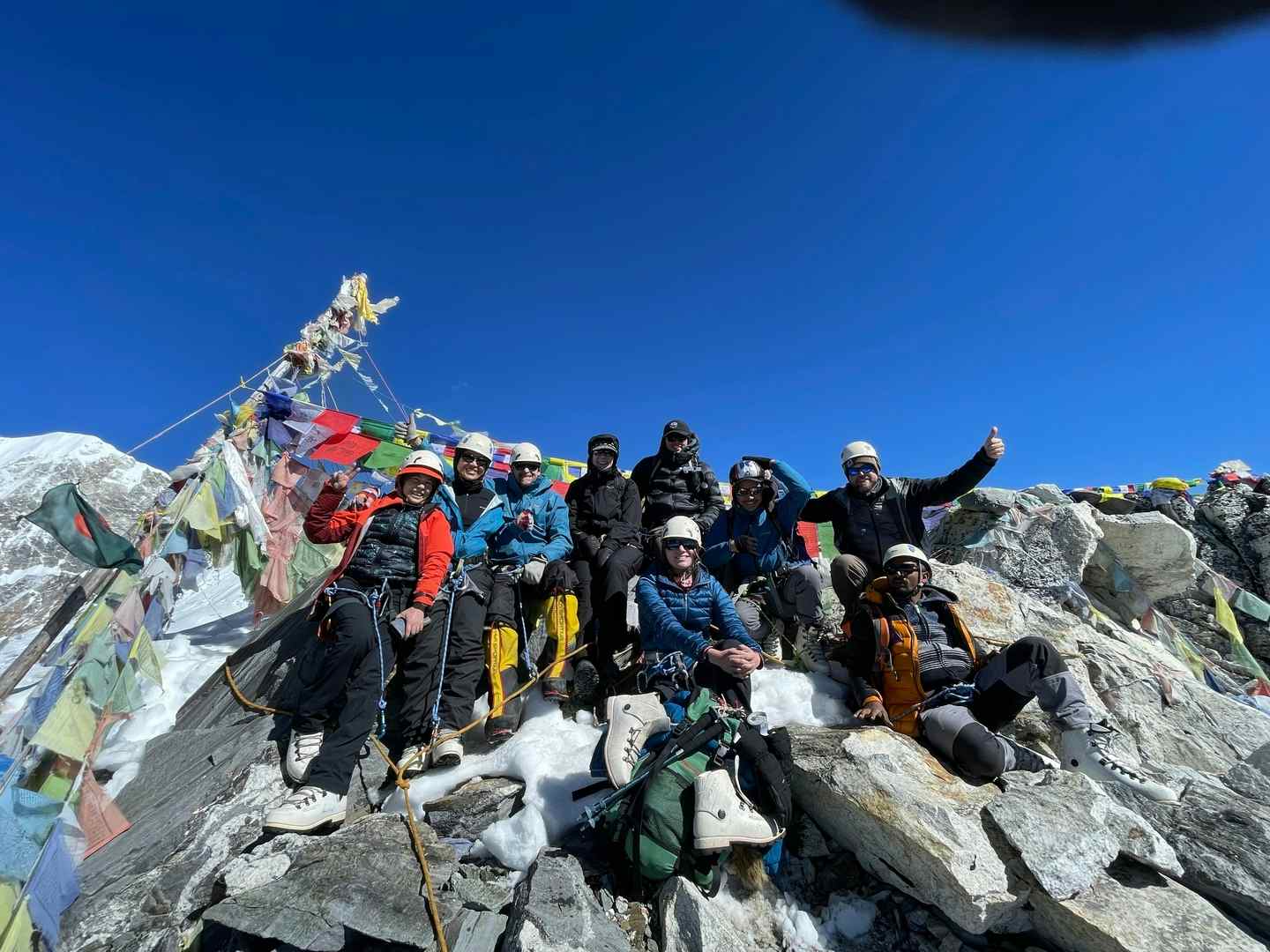
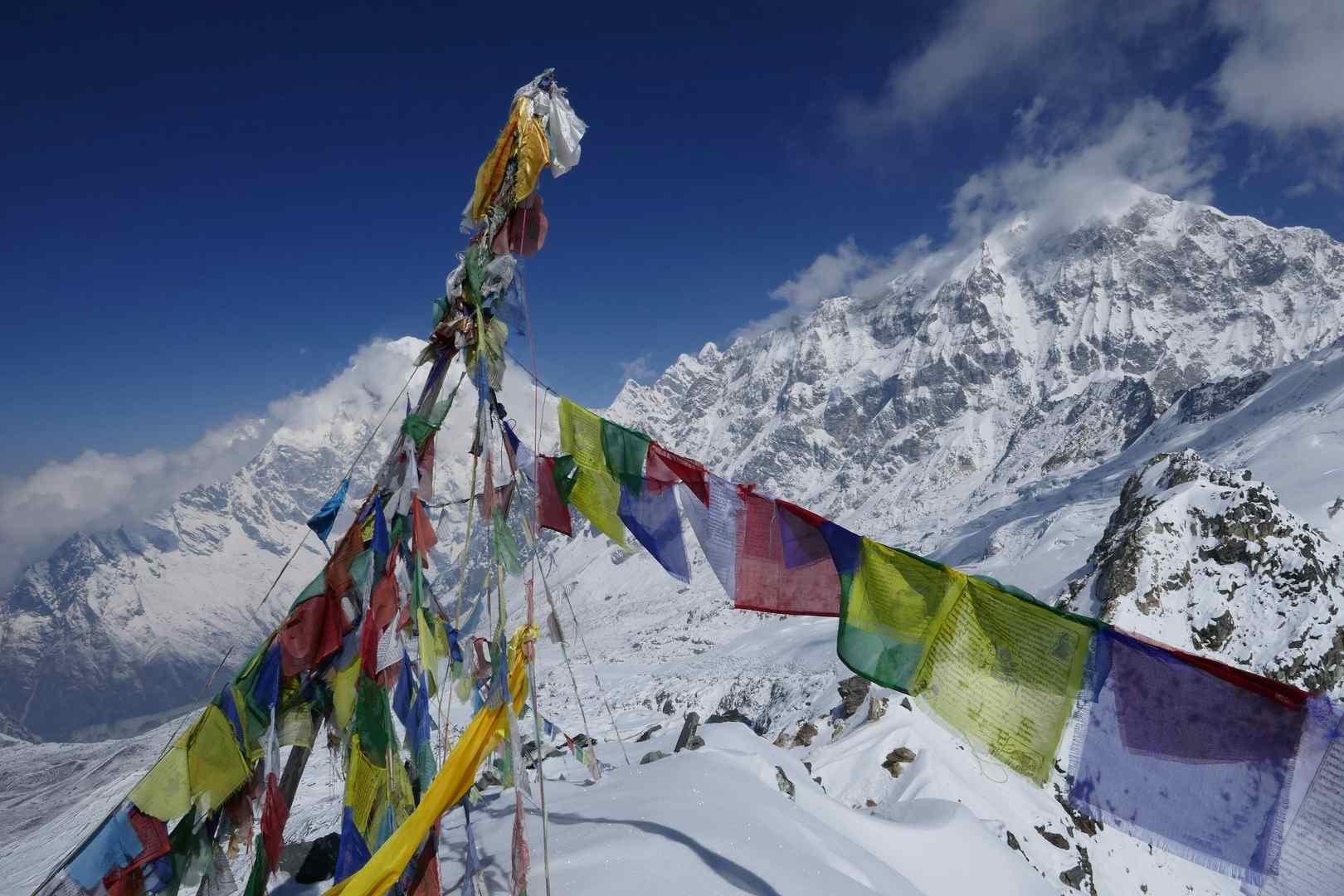
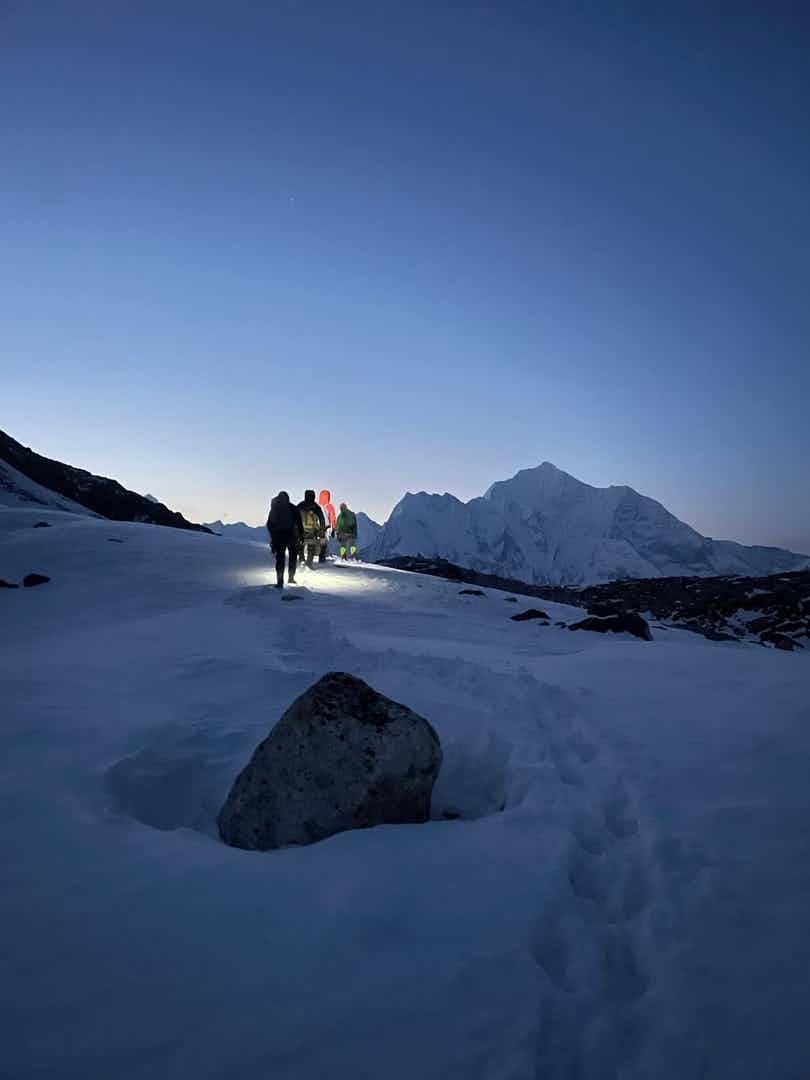
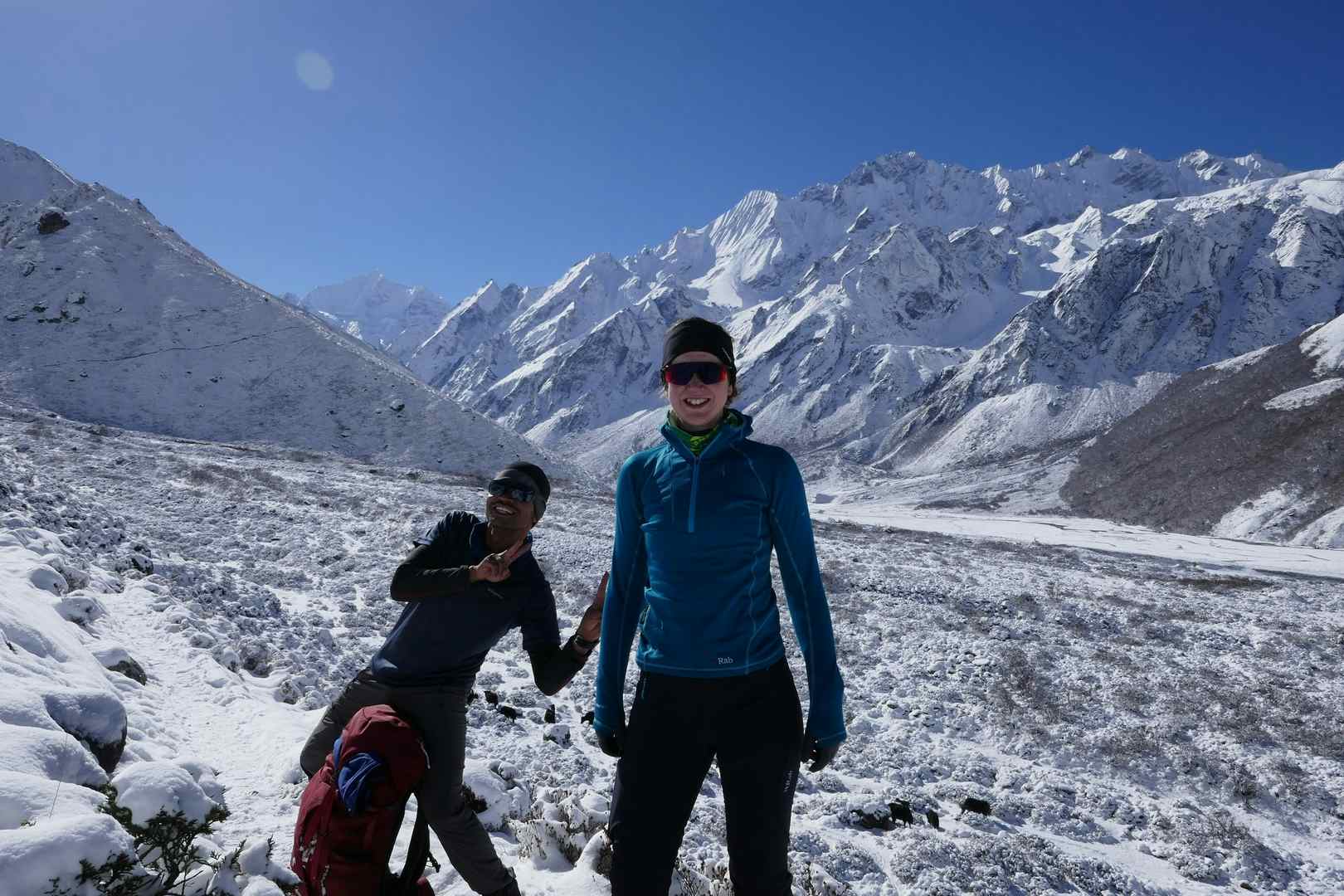
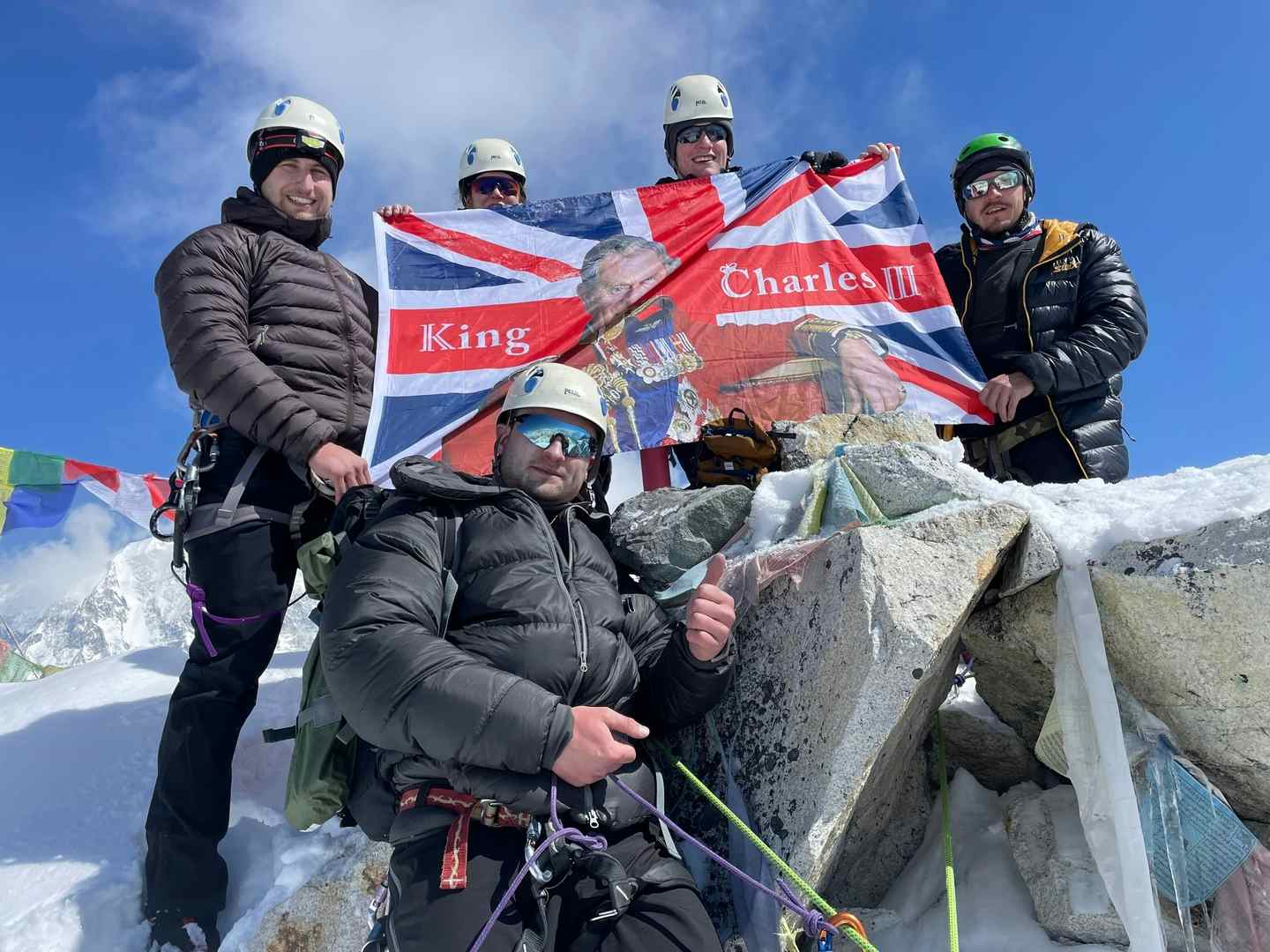
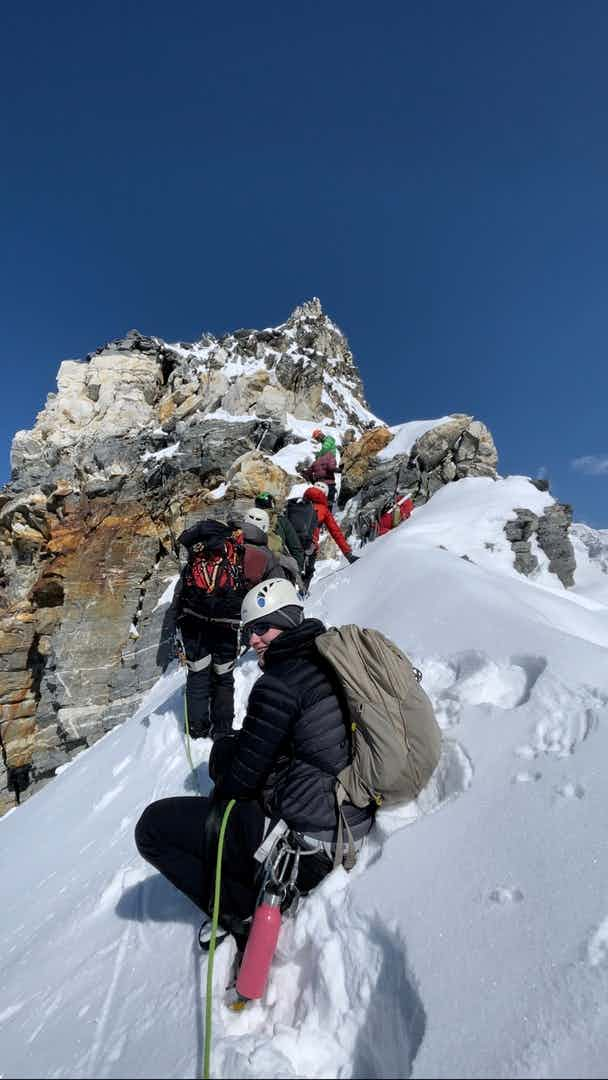
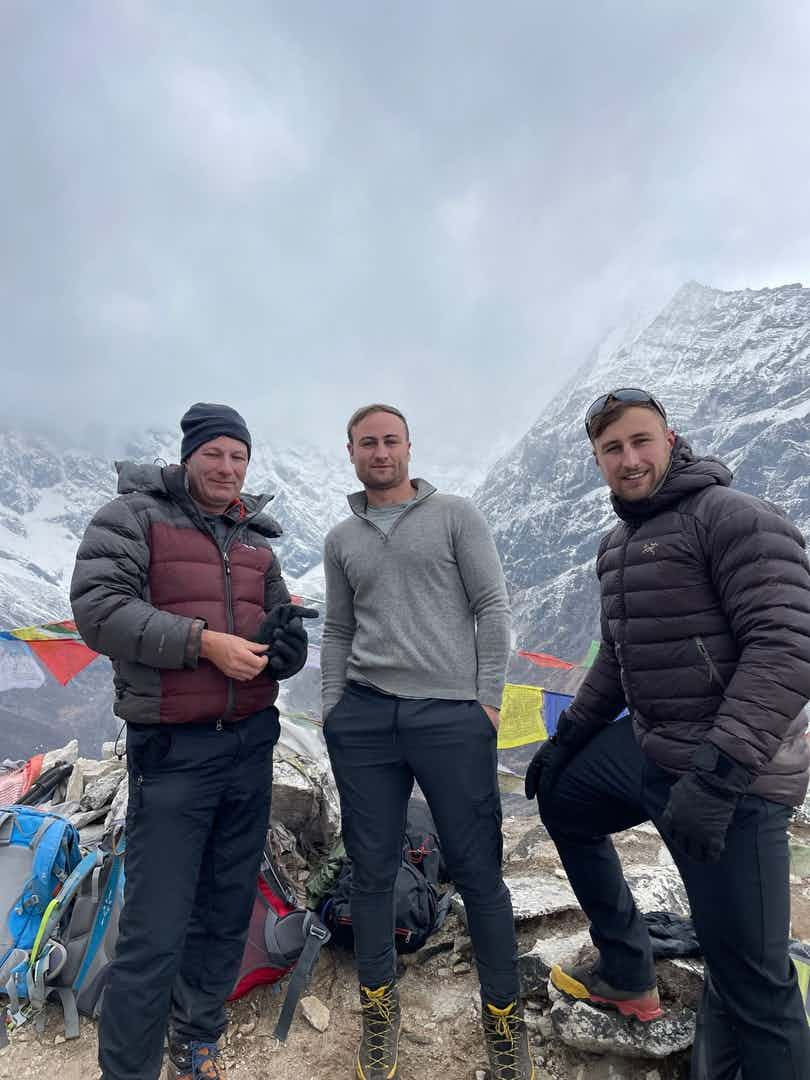
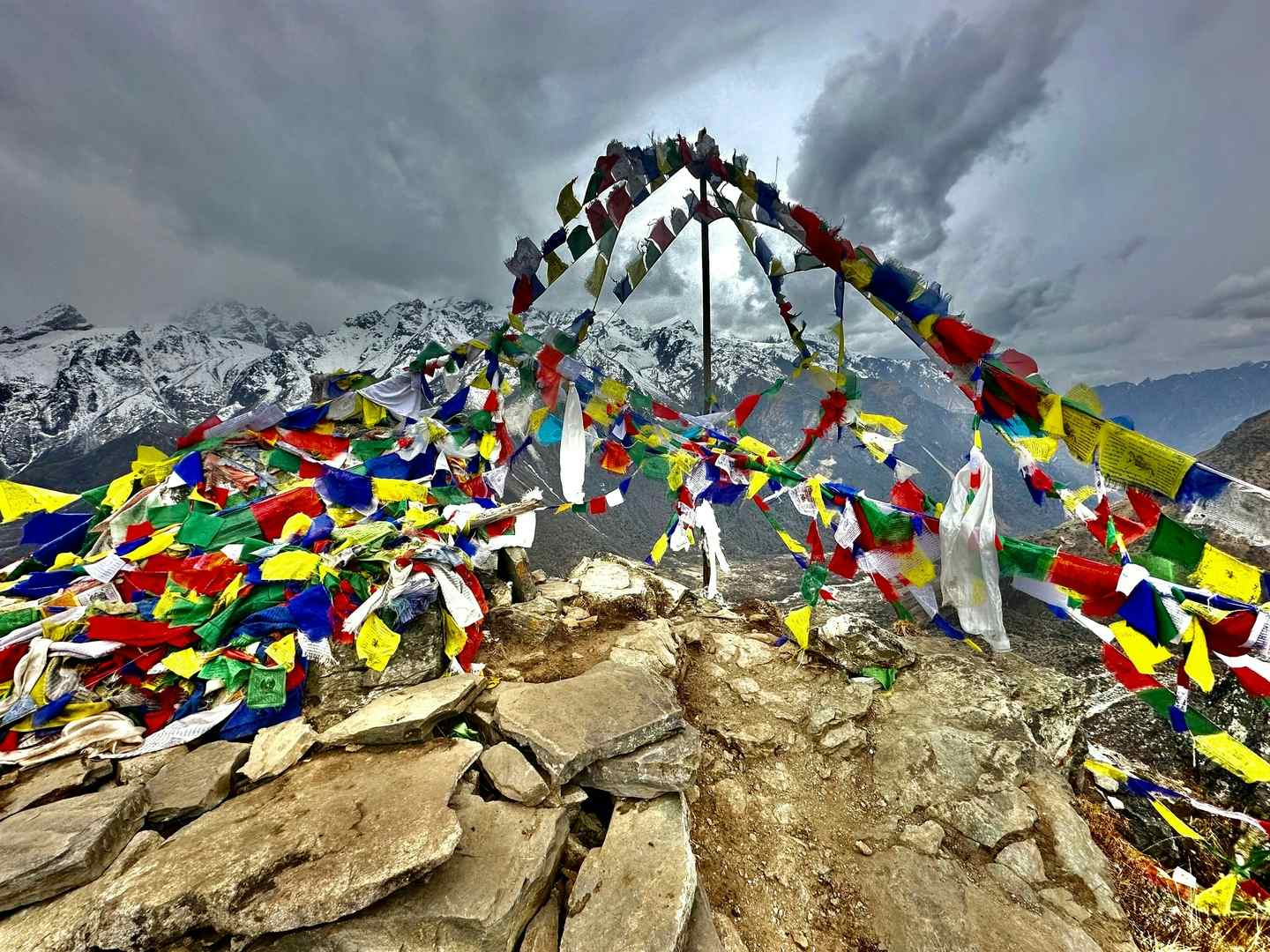
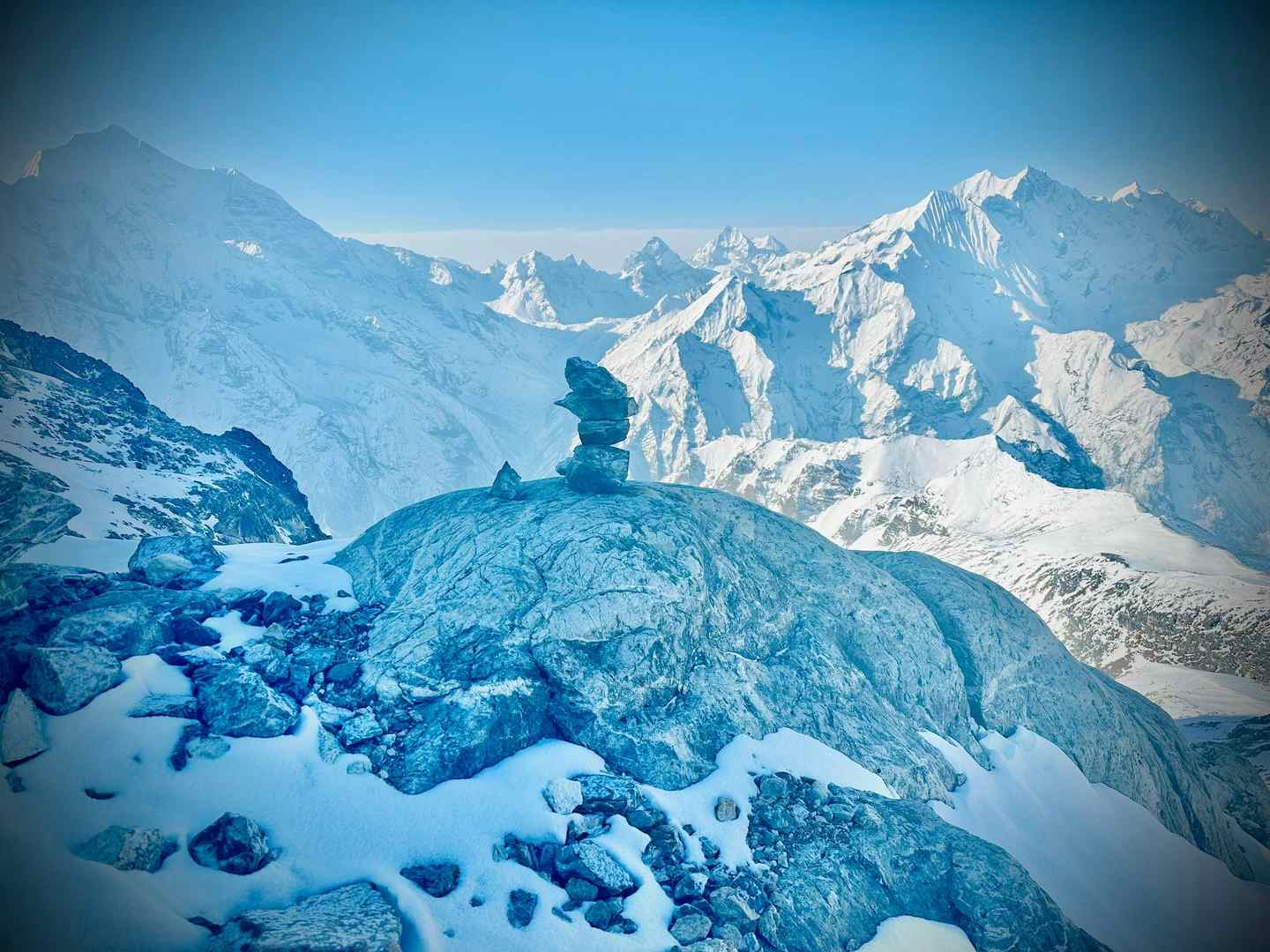
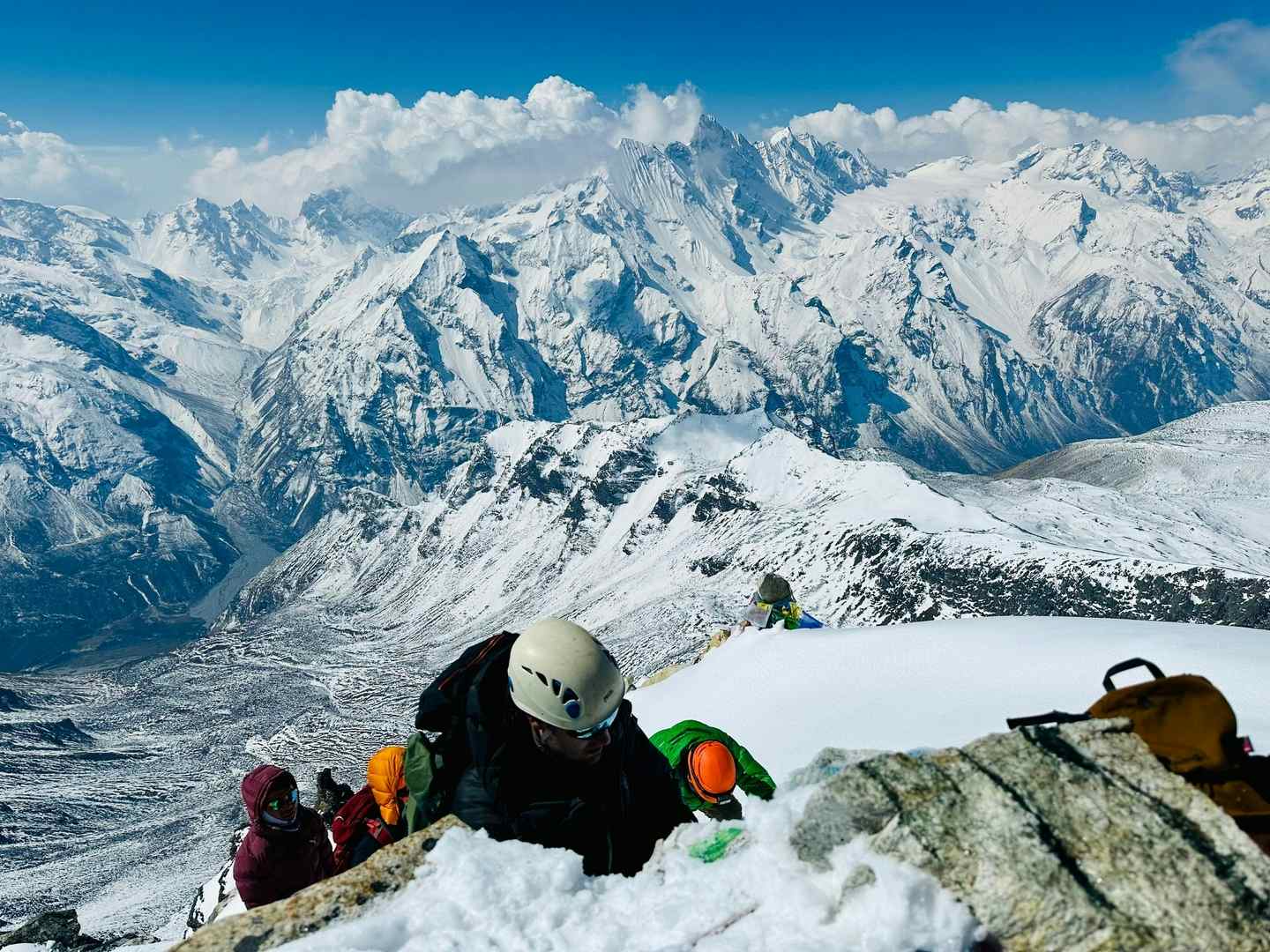
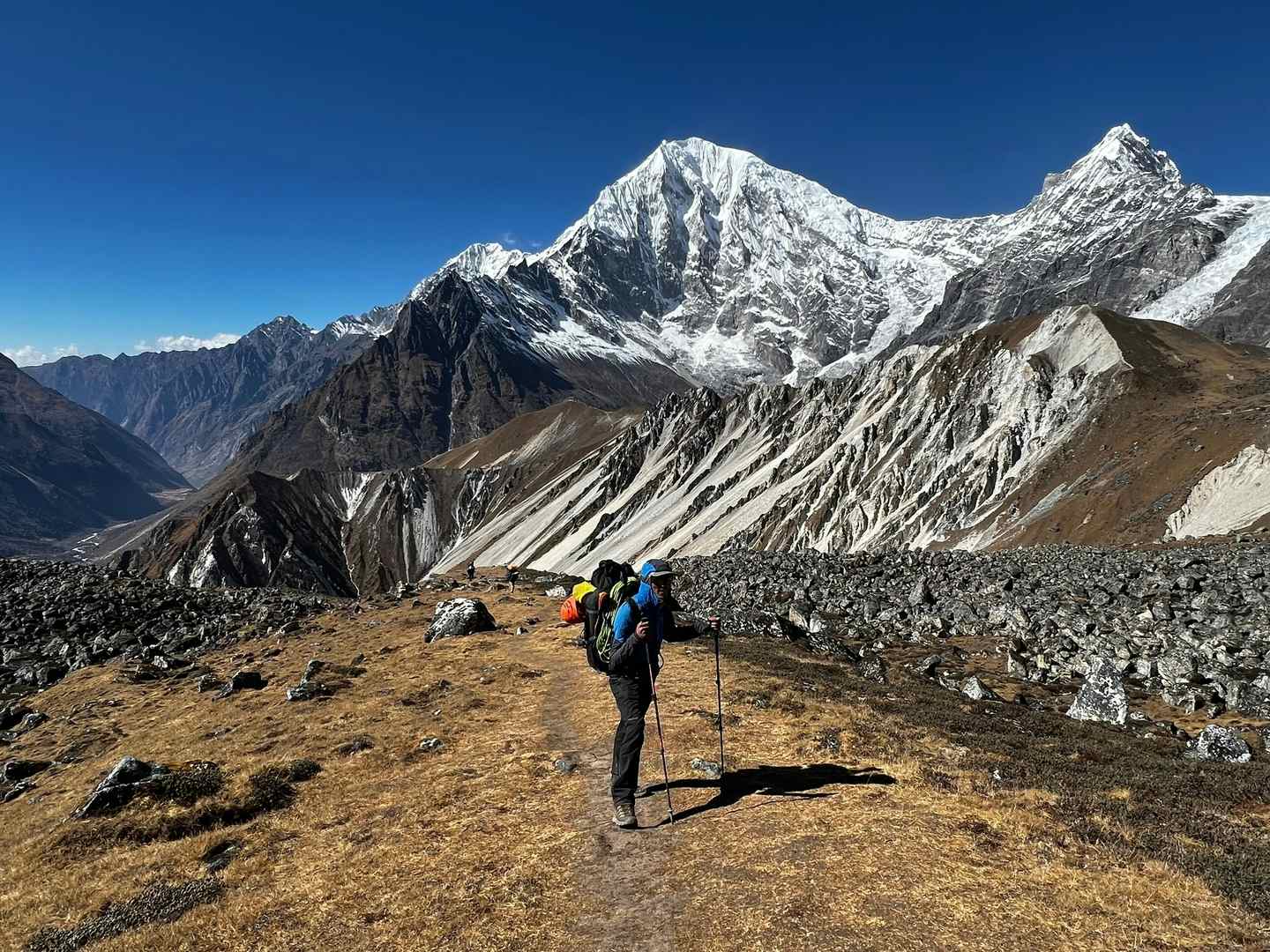
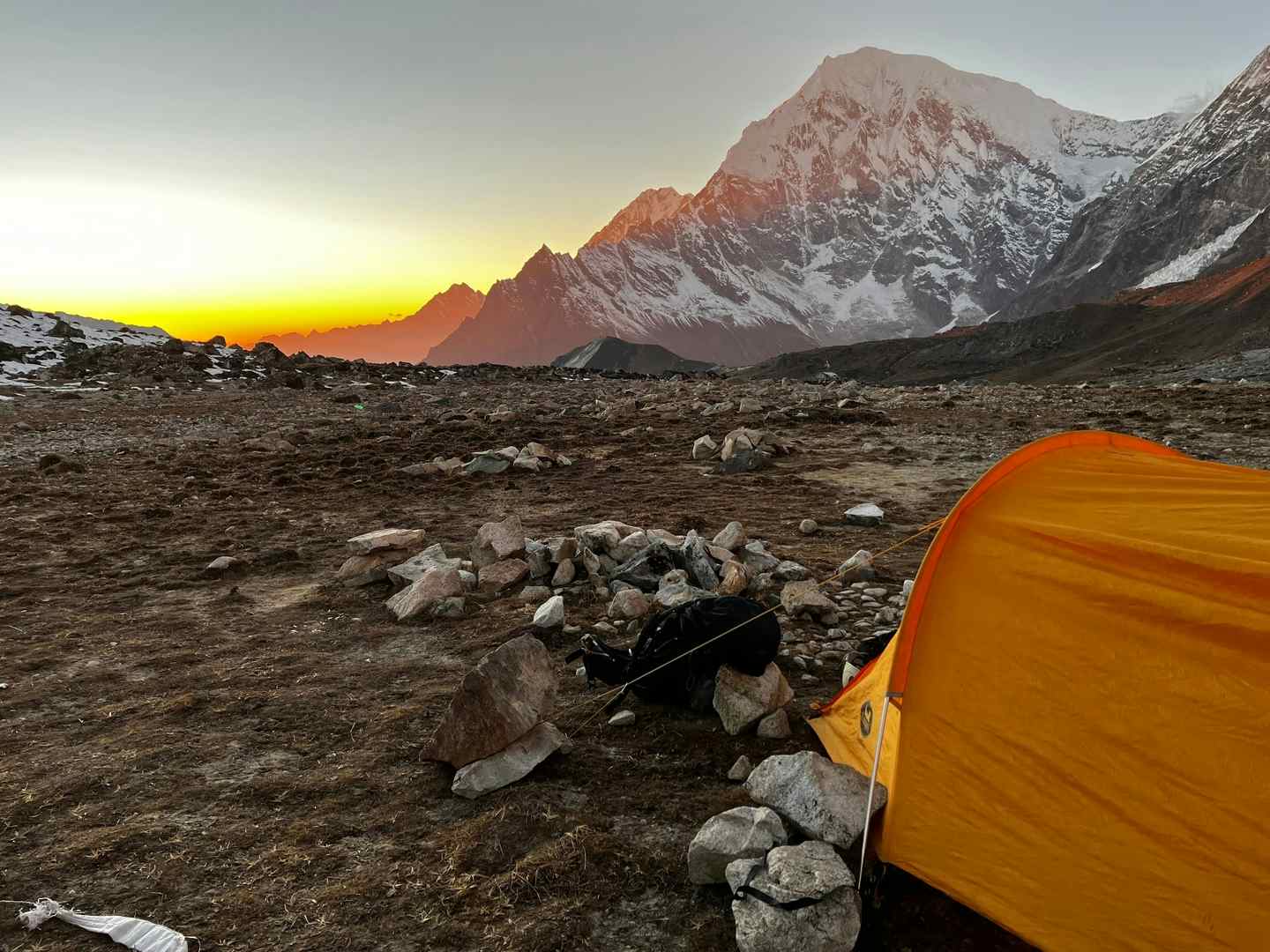
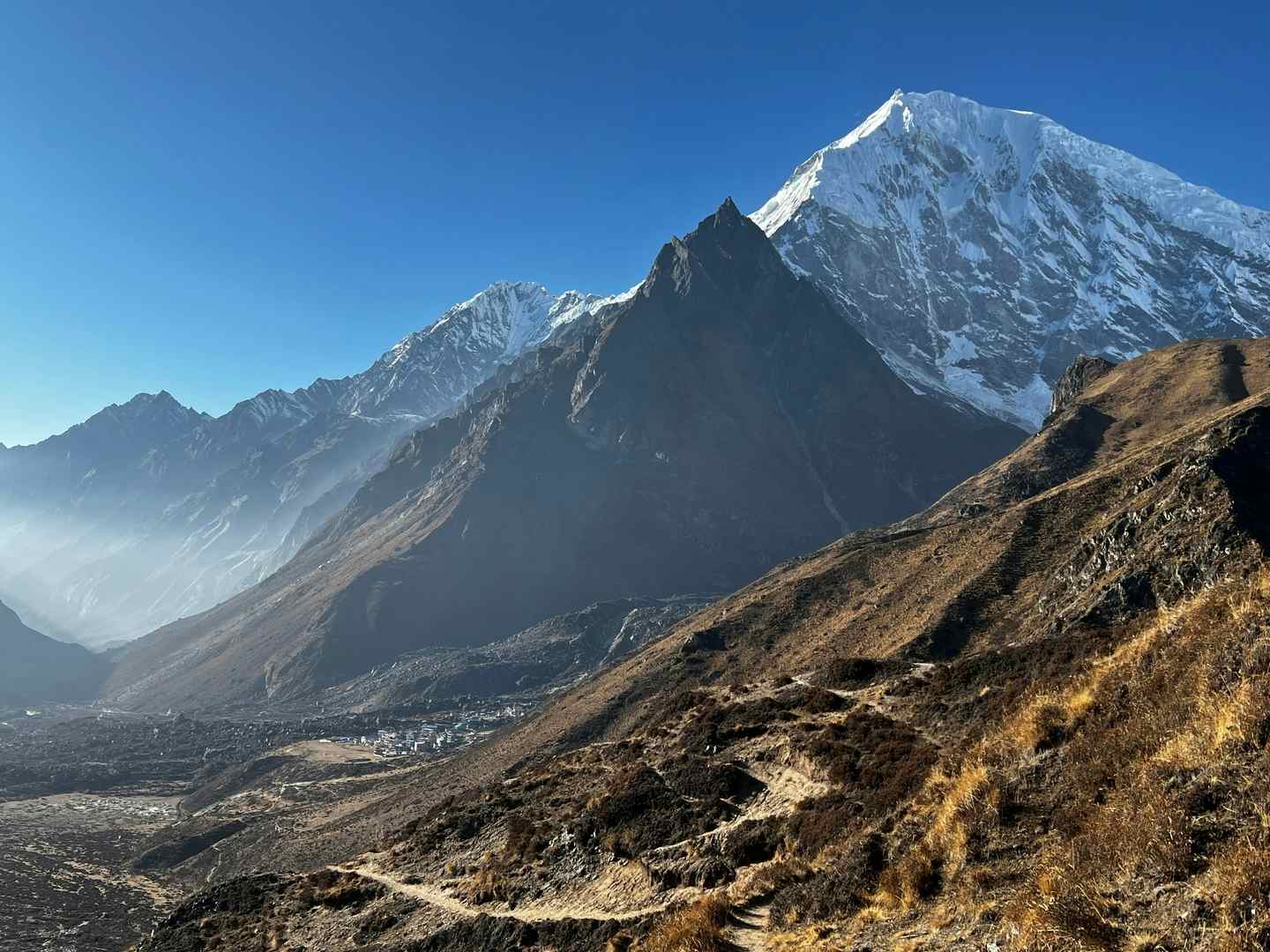
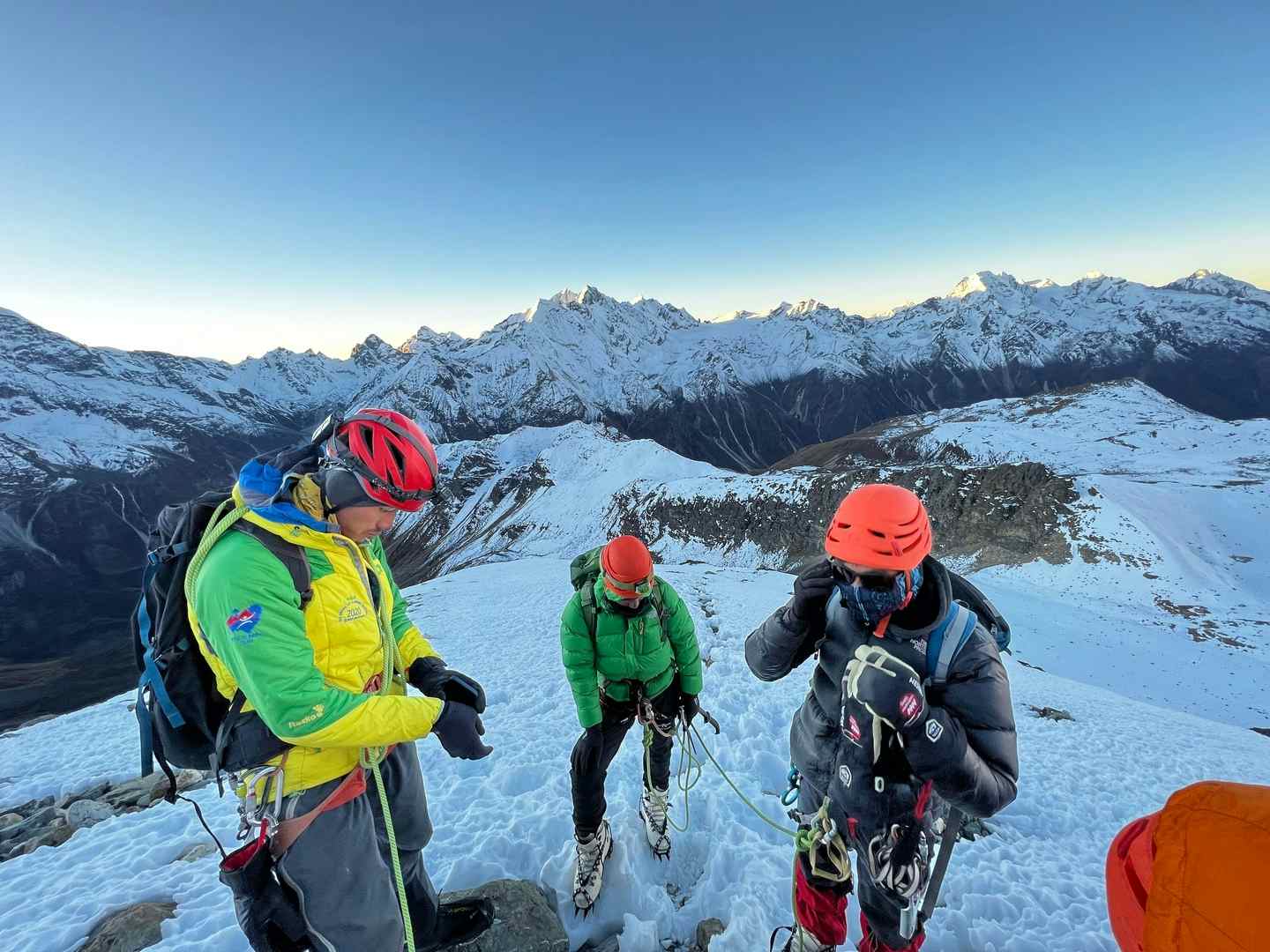
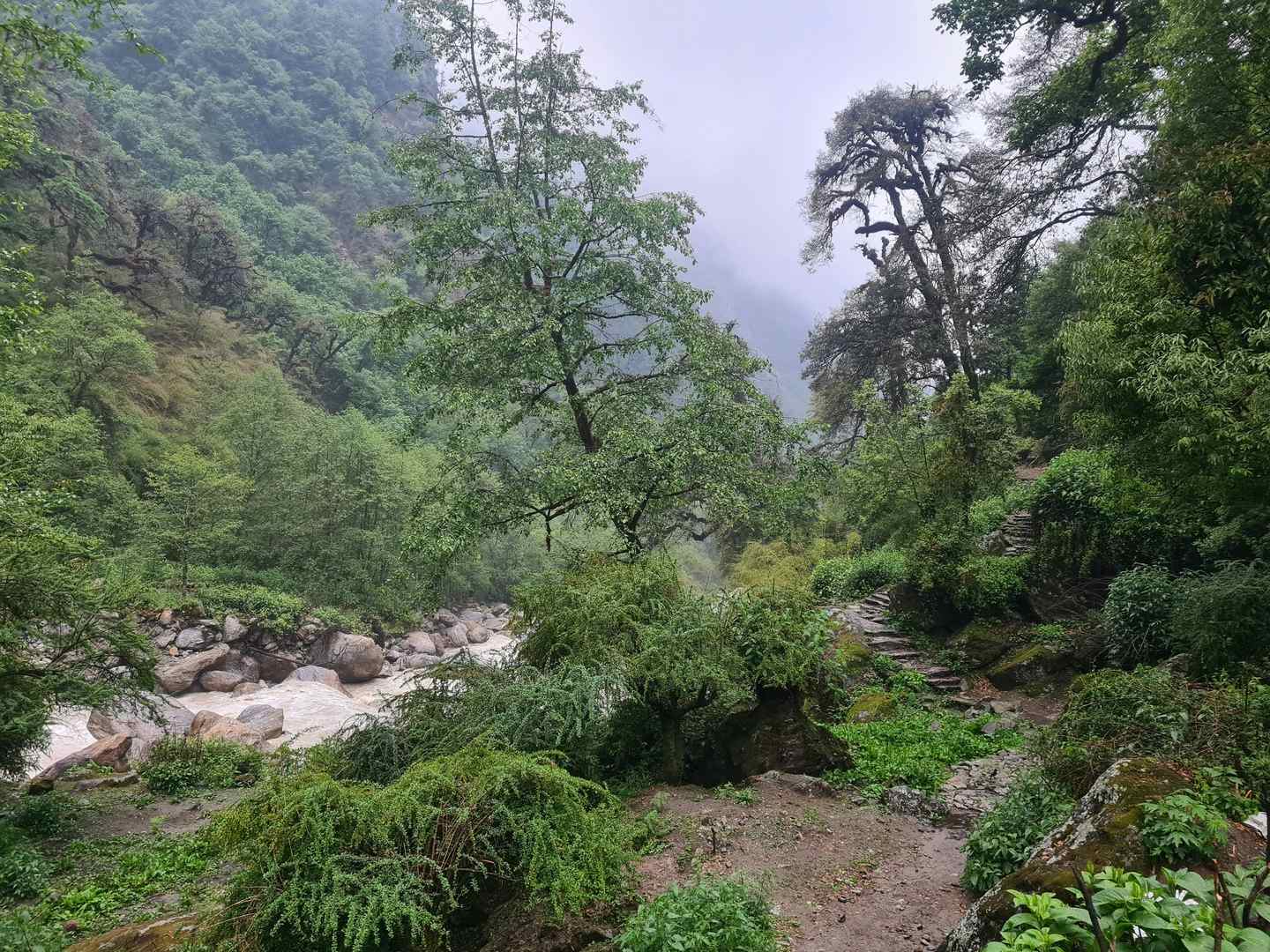
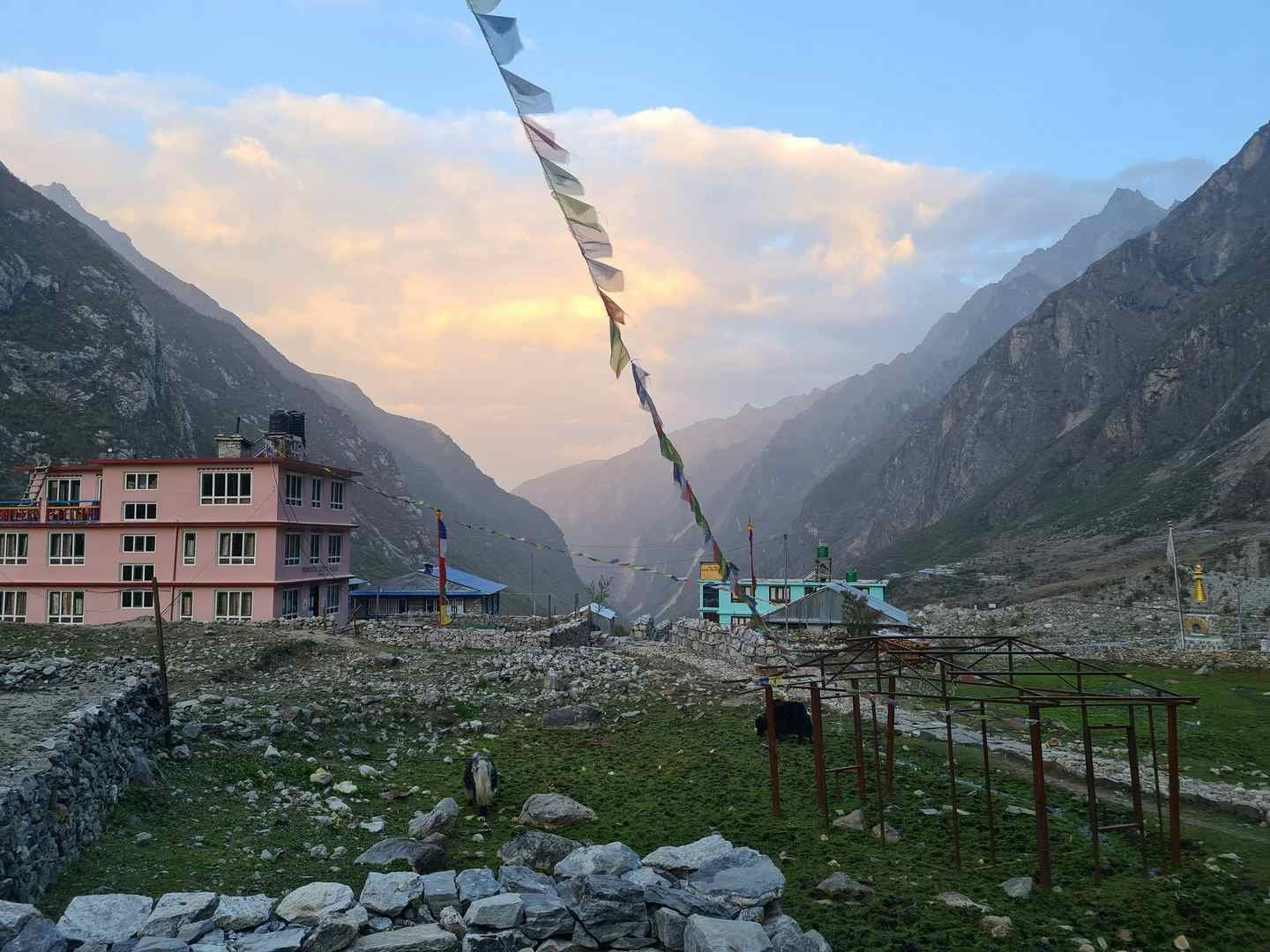
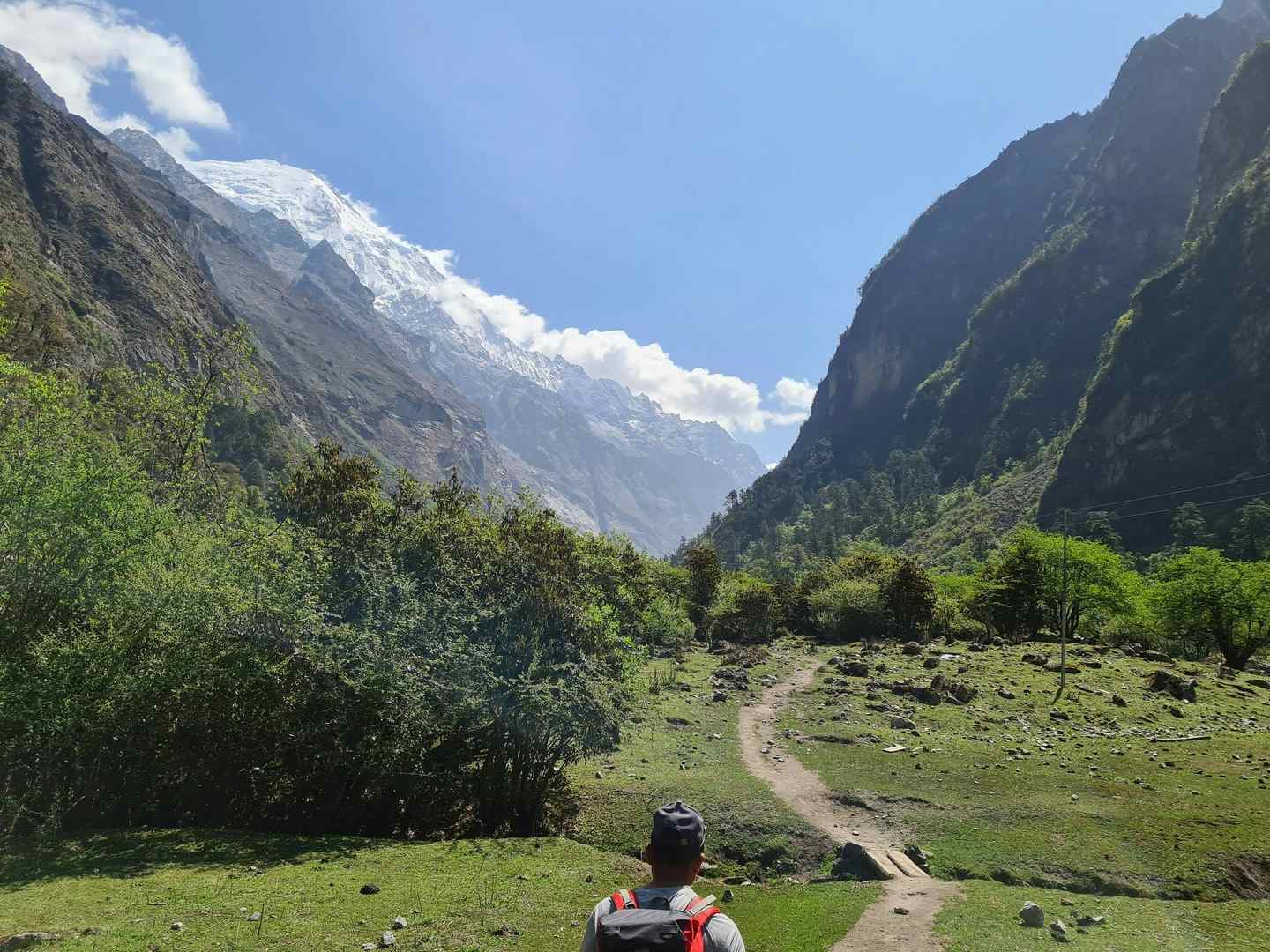
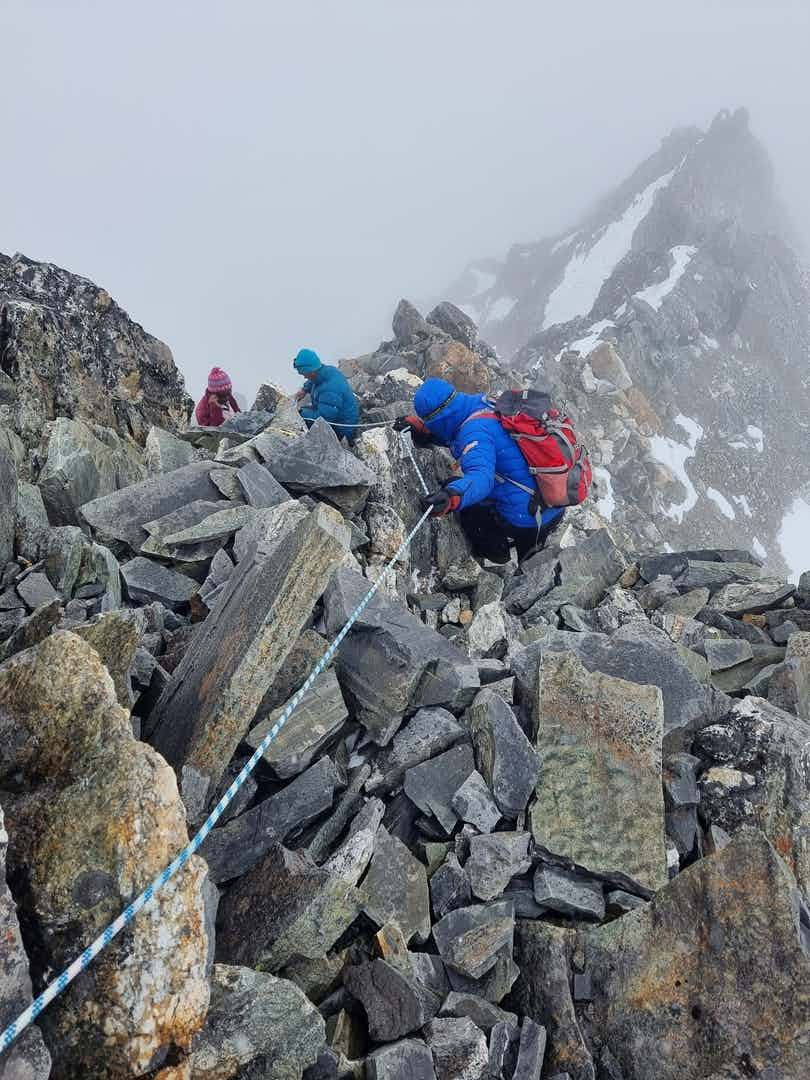
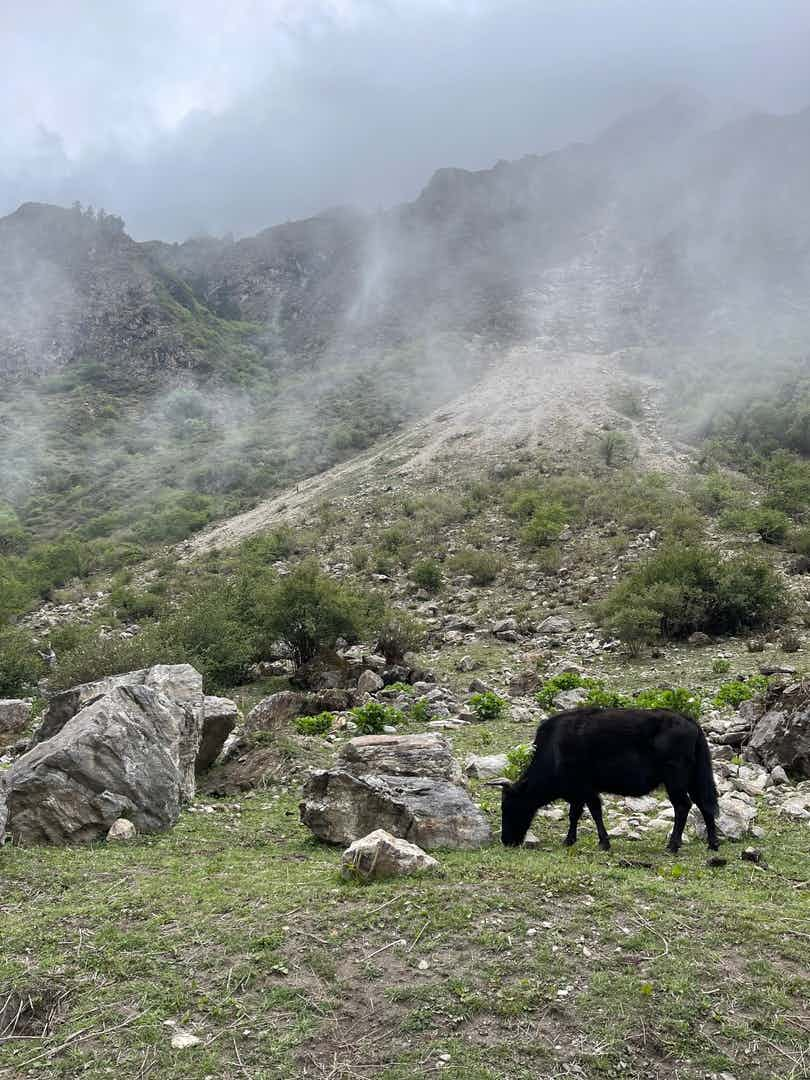
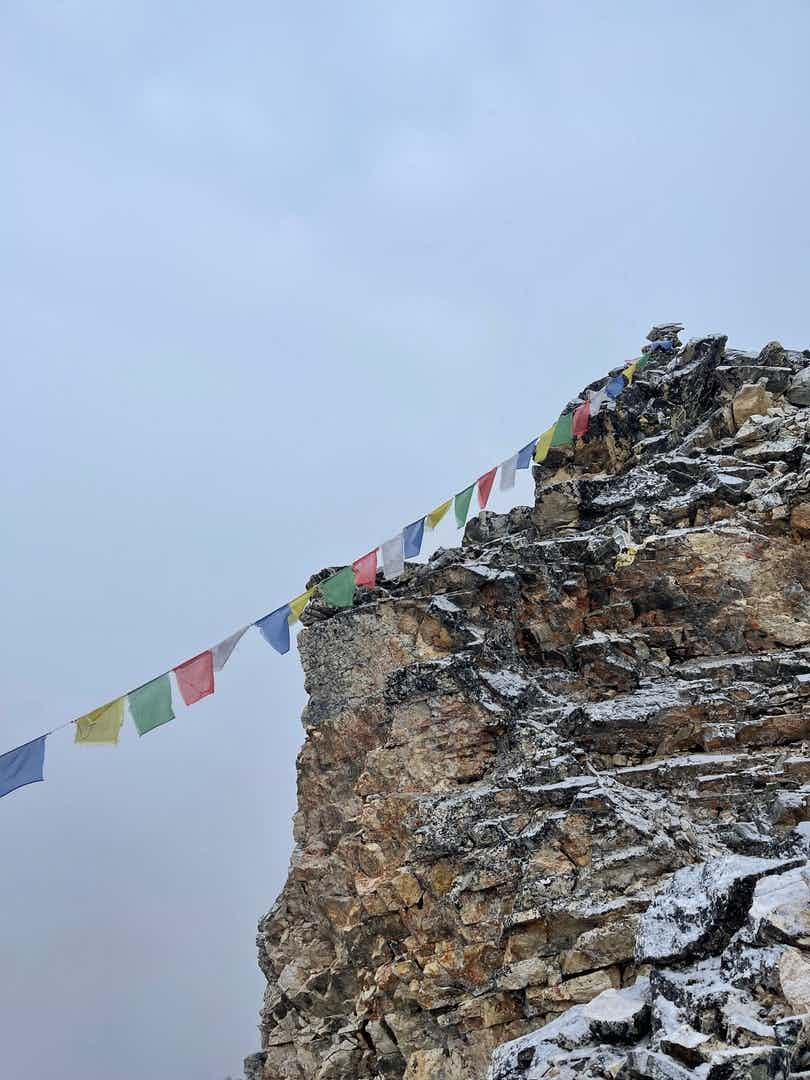
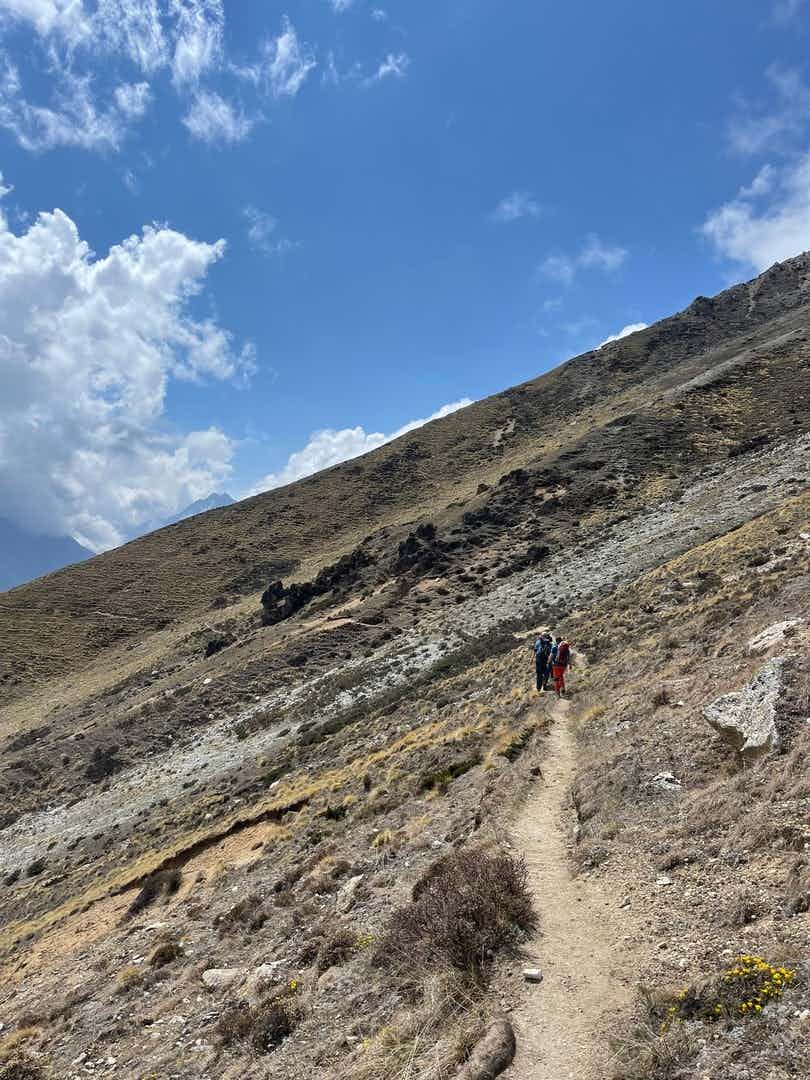
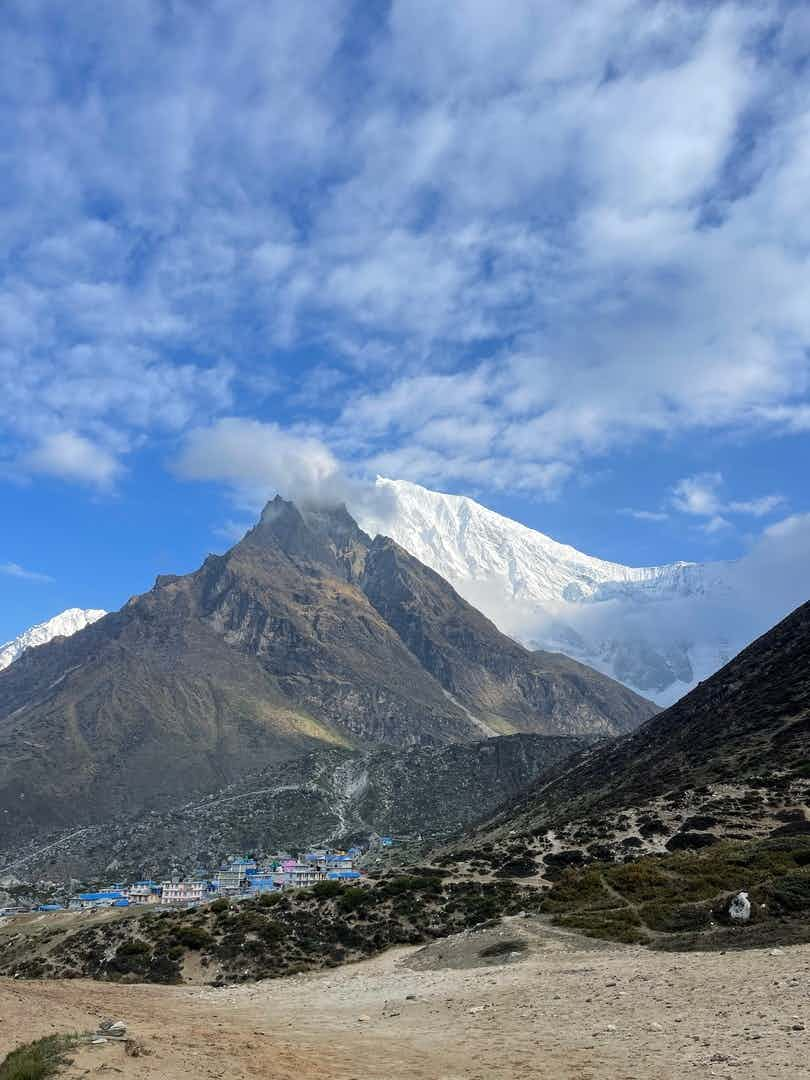
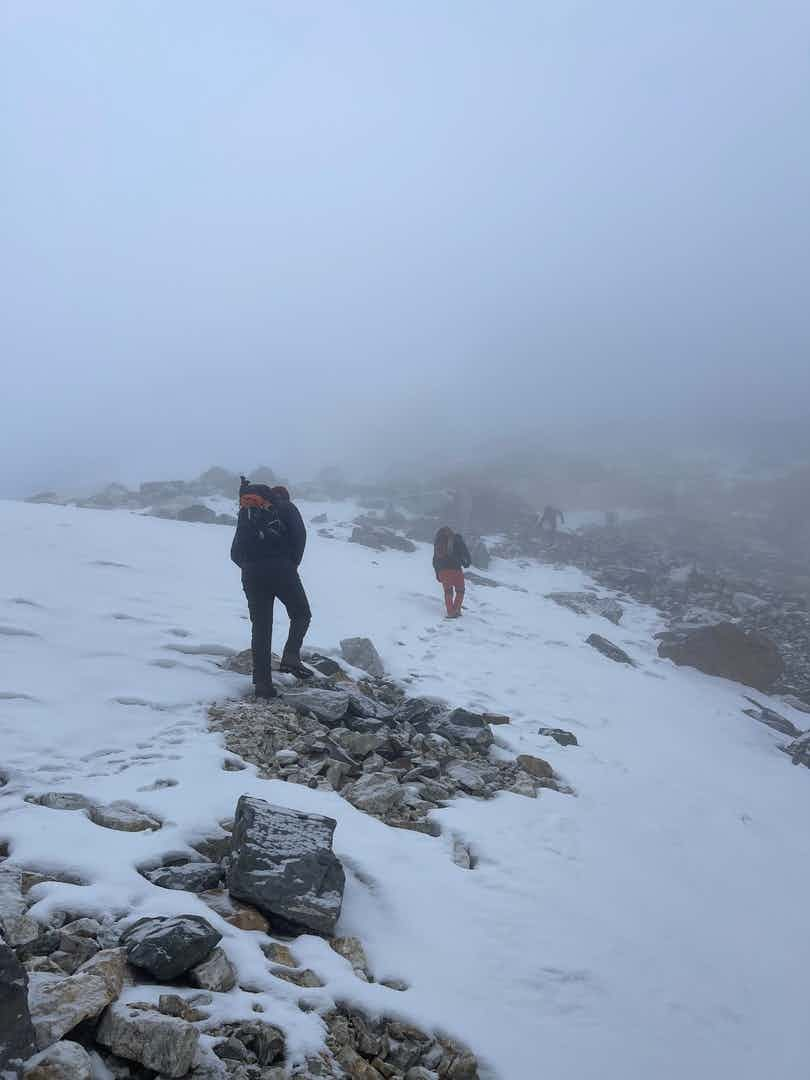

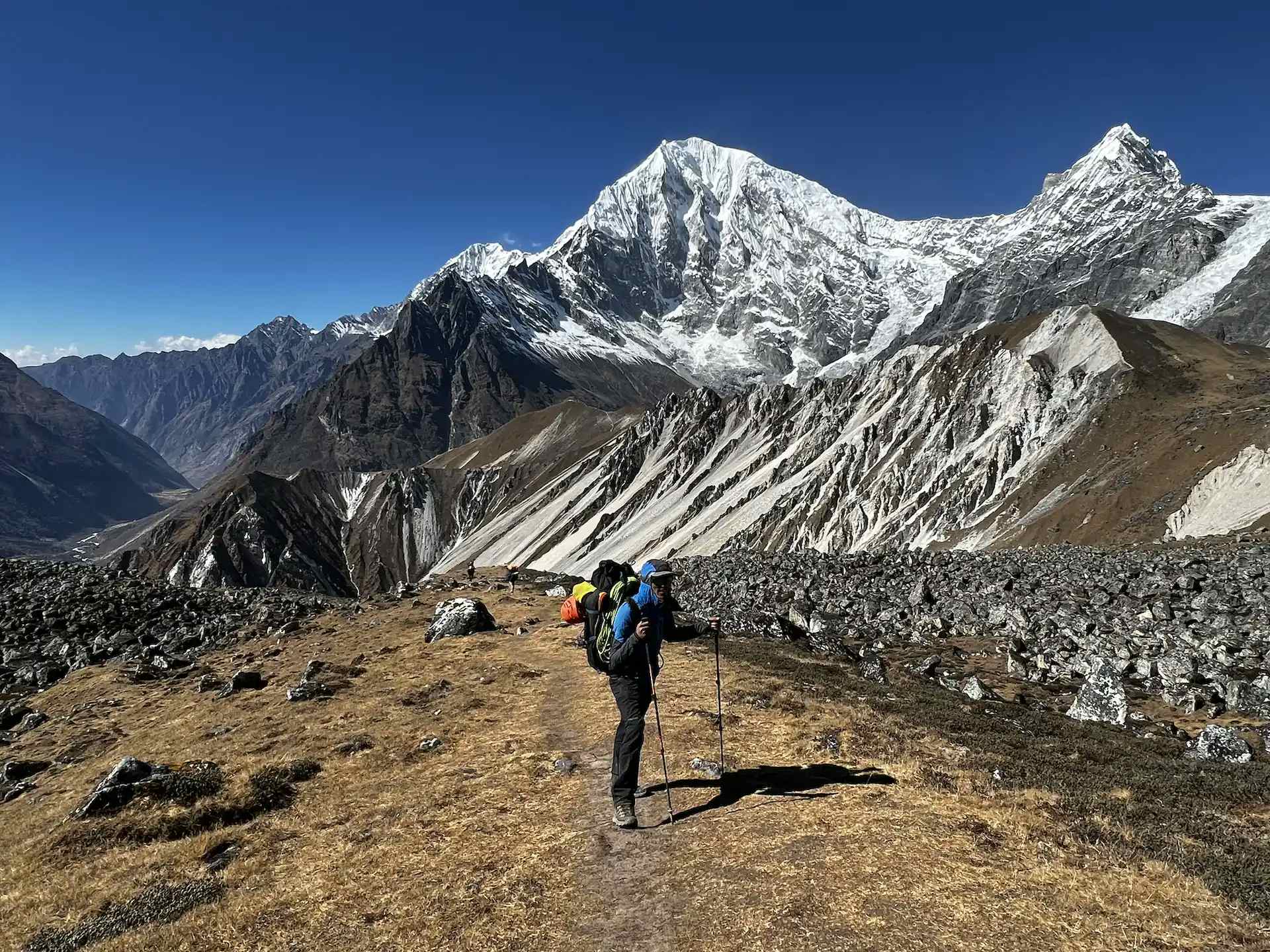
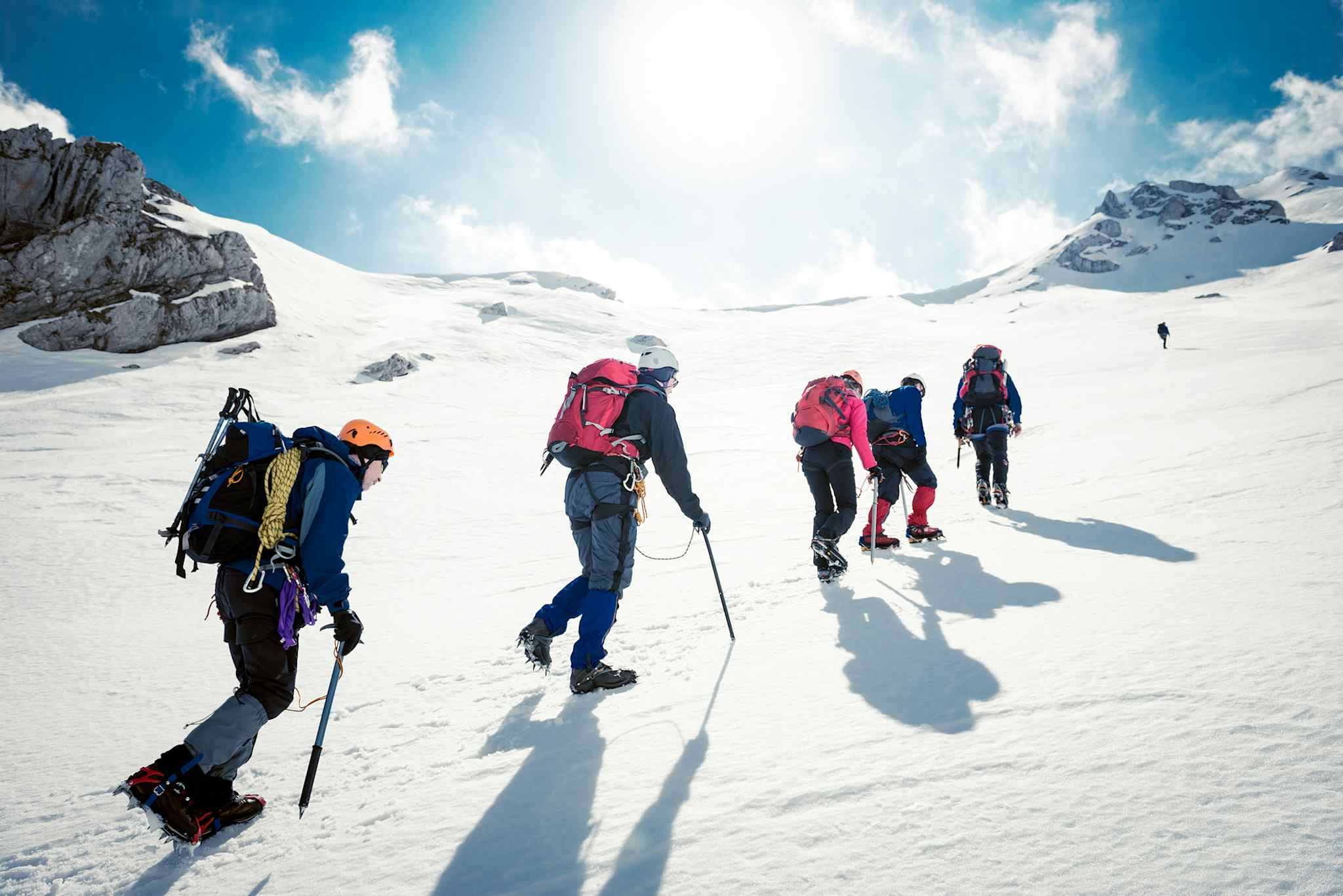
Hike from steamy forest to high-altitude trails in the wildly beautiful Langtang Valley, close to the Tibetan border
Grab your crampons, ropes and ice axe as you navigate the ridge to Yala summit (5500m) on an adventure of a lifetime
Trek among panoramic views of towering peaks and tumbling glaciers in the High Himalaya, including Shishapangma (8027m)
Key Information
Day 1
Arrive in Nepal
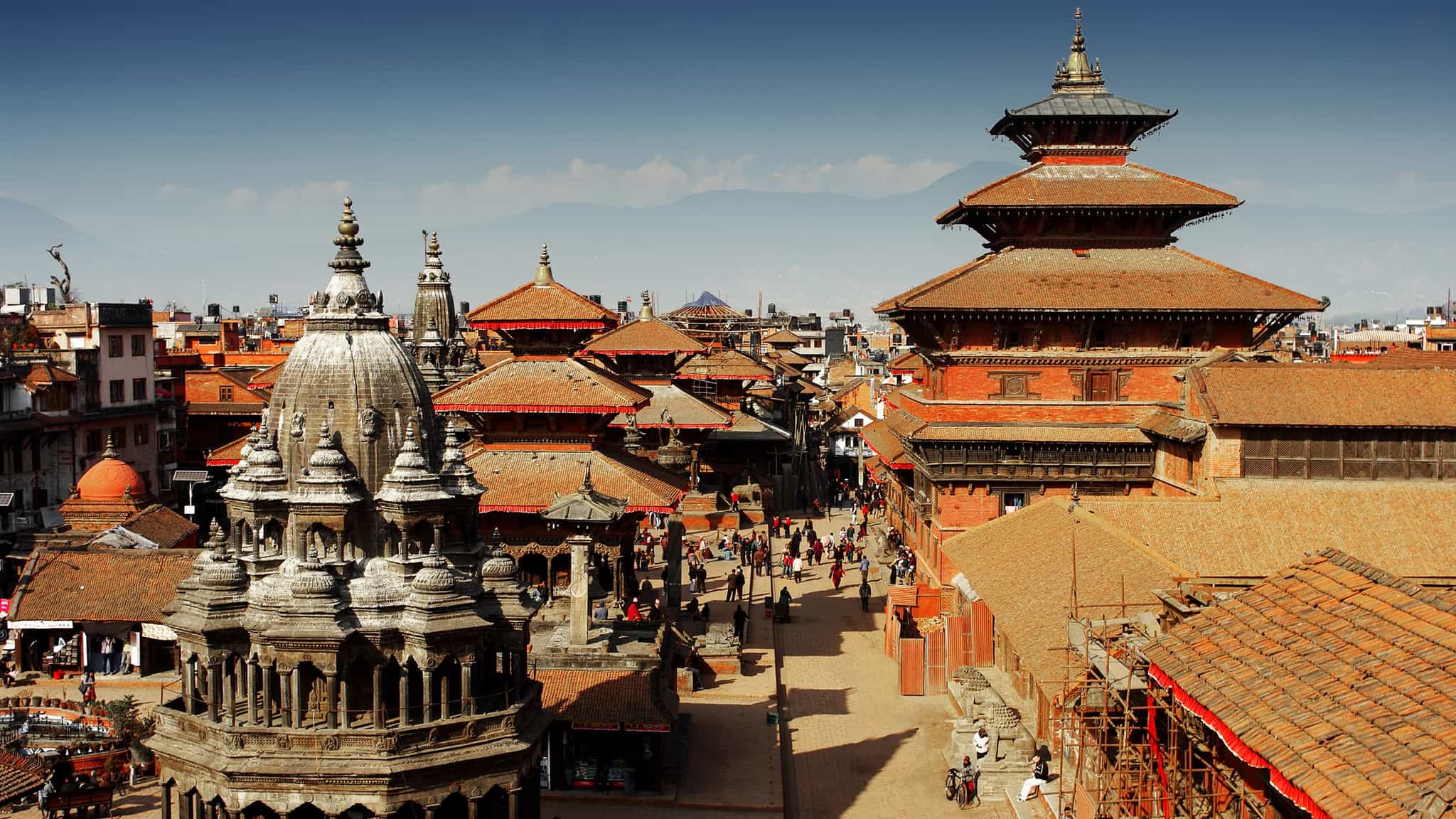
Welcome to Kathmandu! After checking in you'll have a pre-departure meeting with your guides to run through the plans for the trek. You'll finish the day with a group dinner to get to know your team for the next couple of weeks.
Day 2
Roadtrip to Syabrubesi
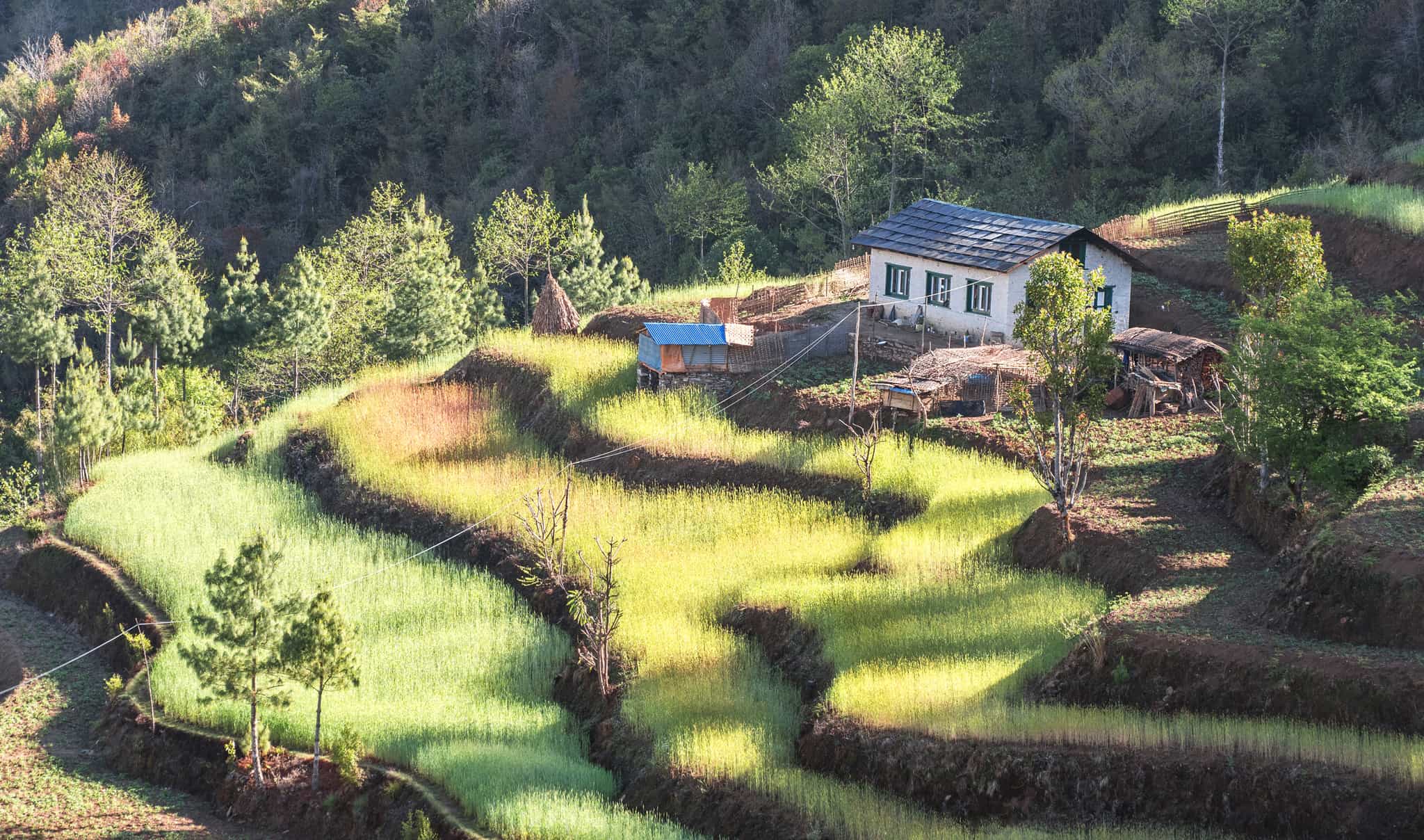
Driving
Bidding goodbye to Kathmandu, you'll hop on a bus for a bone-rattling journey to Syabrubesi – the set-off point for the trek ahead. The journey will take approximately seven hours, but there's plenty to look at as you drive along the scenic banks of Trishuli River with beautiful views of valleys, meadows, rivers, and mountains. You'll make a stop at Dhunche to have your permits checked before bedding down in a teahouse in the village of Syabrubesi.
Day 3
Through the forest to Lama Teahouse via Bamboo
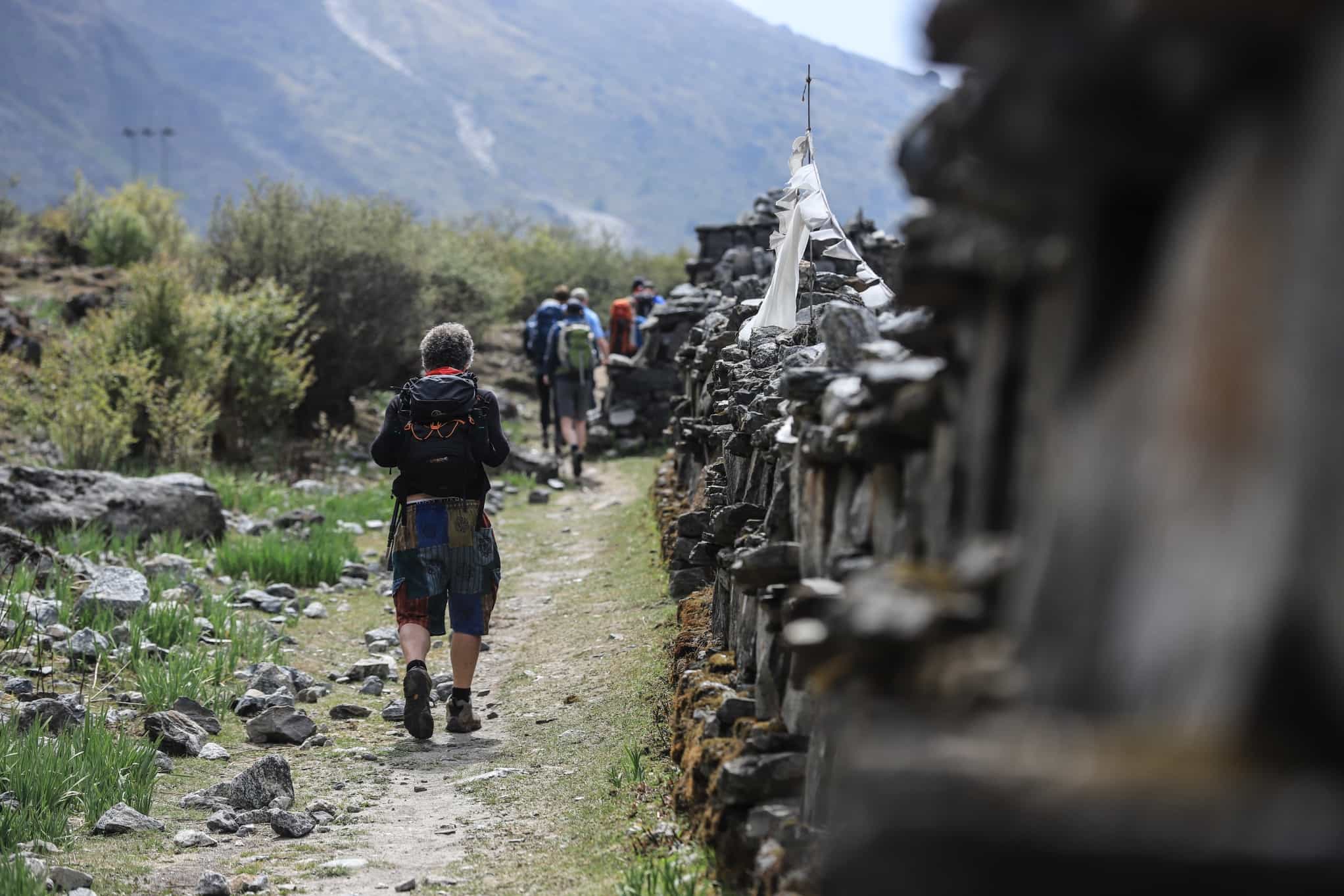
Hiking
Time to lace up your hiking boots up and hit the trail. The gently undulating track weaves up and over the Bhote River suspension bridge through dense forest and past Langtang Khola. Passing through the hamlet of Bamboo, keep your eyes peeled for red panda – these elusive creatures can sometimes be spotted in the forest. You can expect a few glimpses of snow-covered peaks but today is mostly about the river, forests, rocky stairs and a few bridge crossings. Although the elevation is not high yet (below 2500m), the humid temperature will make the hike a sweaty one and test your stamina for the challenge ahead.
Day 4
To Langtang village
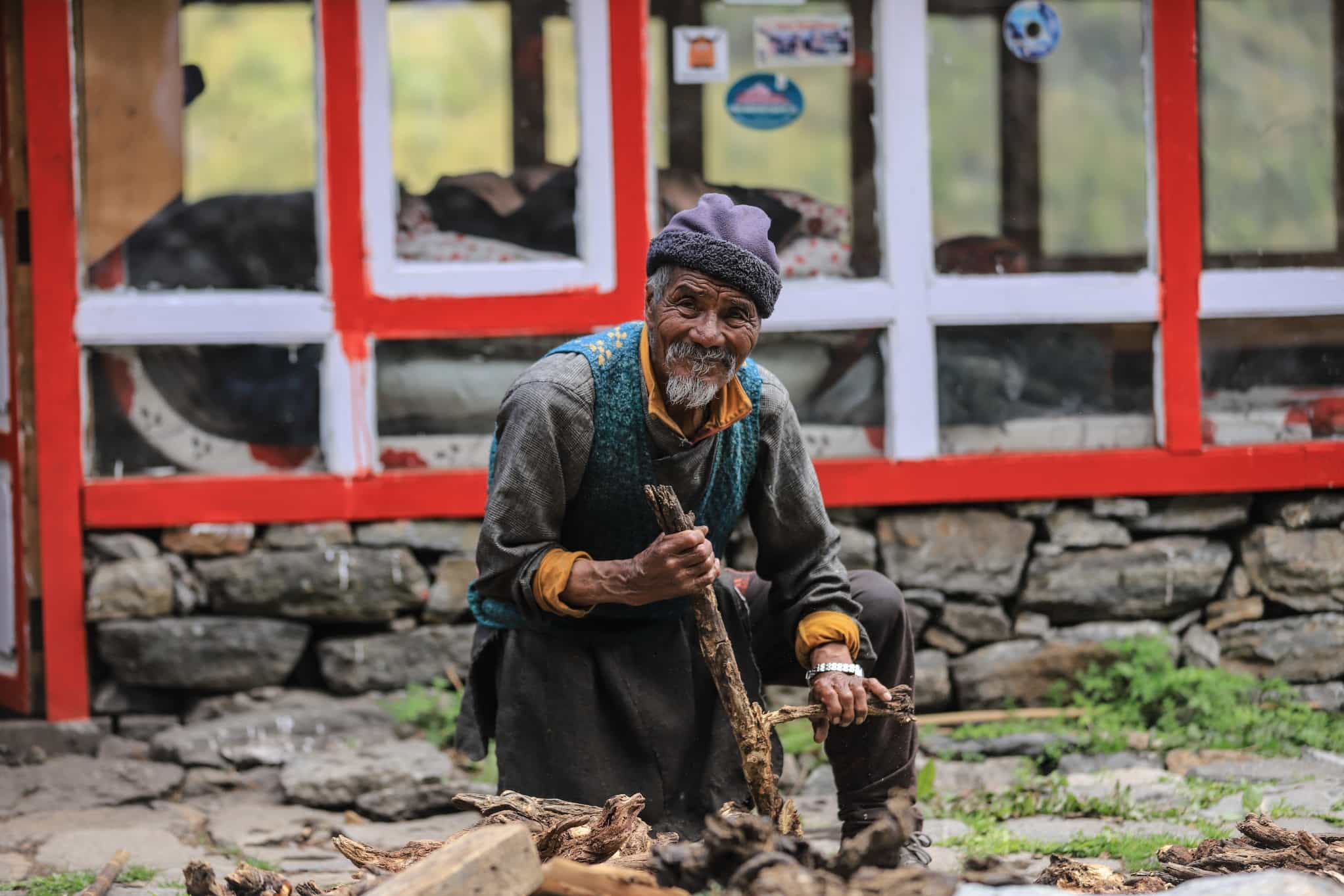
Hiking
Start the day with a walk through beautiful wild forests of hemlock, oak and huge rhododendron, with snow-capped peaks beginning to appear in the distance. After a steady climb, you'll pass the army checkpoint at Ghodatabela before reaching Langtang village. This sombre spot was one of the worst-hit areas when the earthquake hit in 2015 and is still being rebuilt – income from tourism is fundamental to its recovery.
Day 5
Stomp on to Kyanjin Gompa
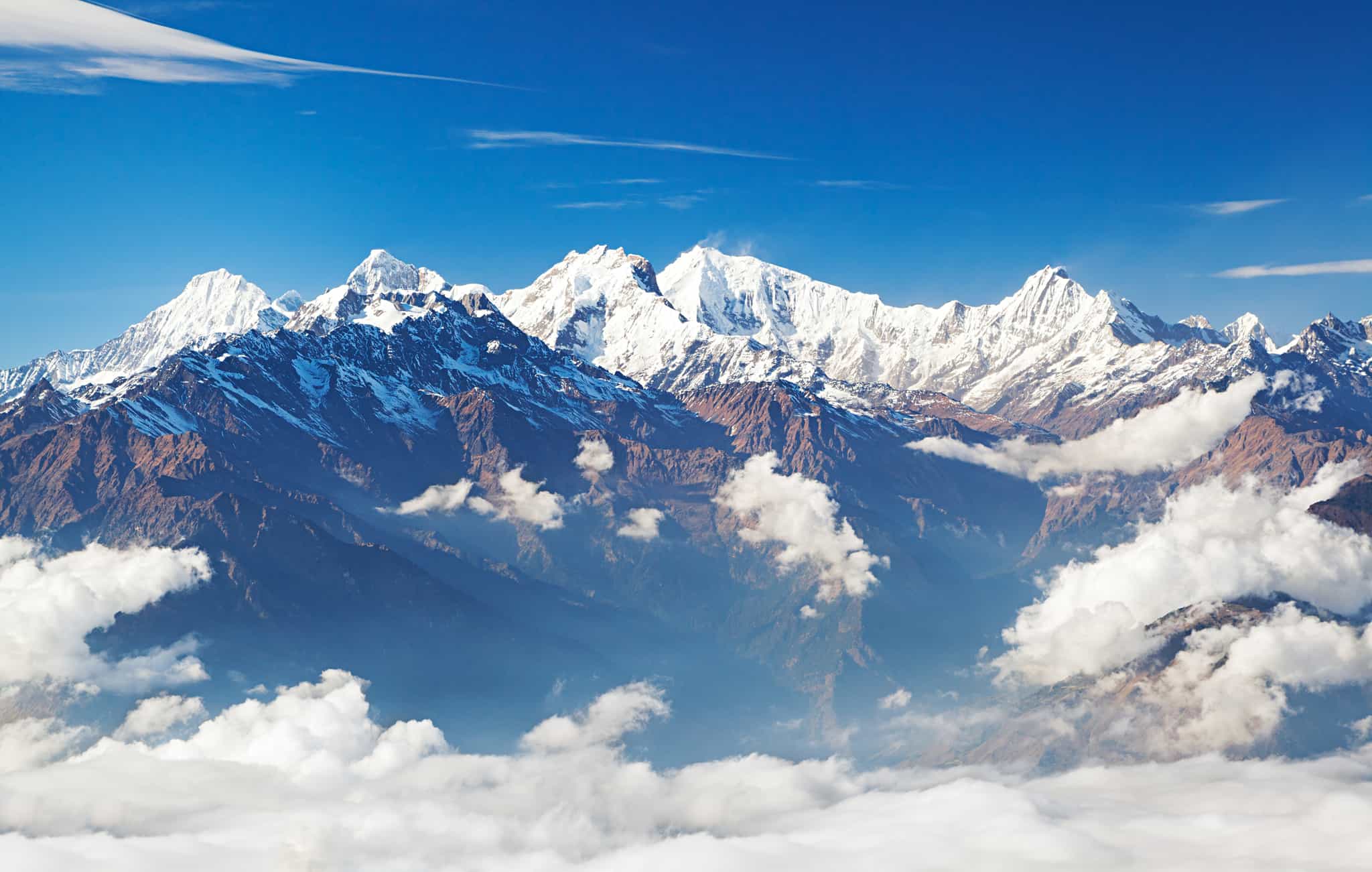
Hiking
Leaving Langtang behind, the trail crosses yak pastures and follows a meandering stream. Gengchempo (6387m) is a prominent landmark off to the east and your first sight of a mighty peak. The trail reaches the Tamang settlements of Mundu (3410m) and Sindum (3410m) flanked by equally spectacular peaks, as the full Langtang range makes an appearance. Time for some dal bhat at your teahouse in Kyanjin Gompa to end the day.
Day 6
The Kyanjin Gompa loop
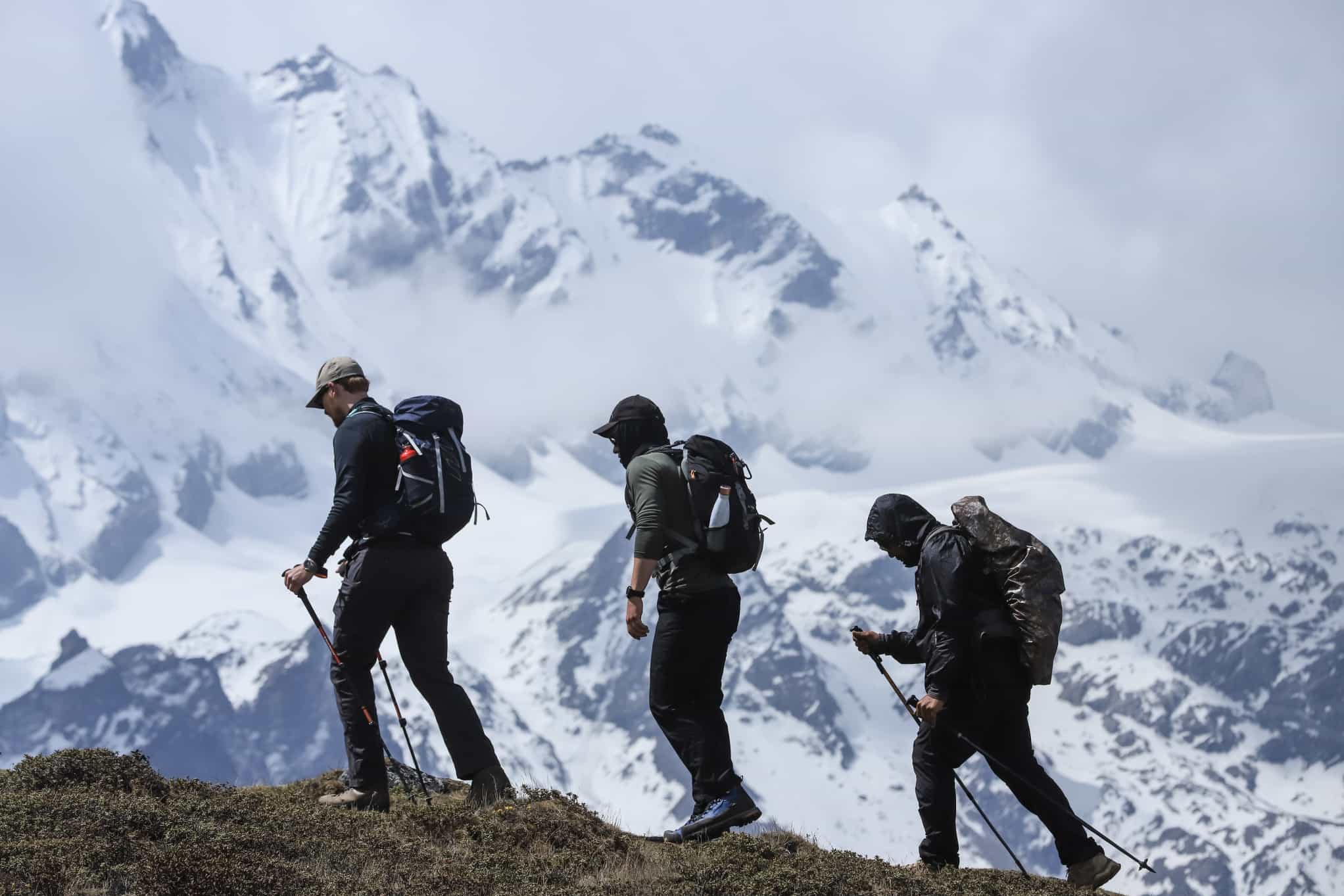
Hiking
No need to pack up this morning as you'll return to the same spot this evening. Today is a relatively easy day as you acclimatise to being at altitude (currently at 3830m). You can wander to a monastery, visit a local cheese factory or walk up the moraine to see the spectacular ice faces and tumbling glaciers of Langtang Lirung. For those with energy to burn, your guide can also take you up Kyanjin Ri (4773m) for a breathtaking panorama of the Langtang peaks. Overnight at Kyanjin Gompa, don't forget to look up at the stars!
Day 7
To Yala Base Camp
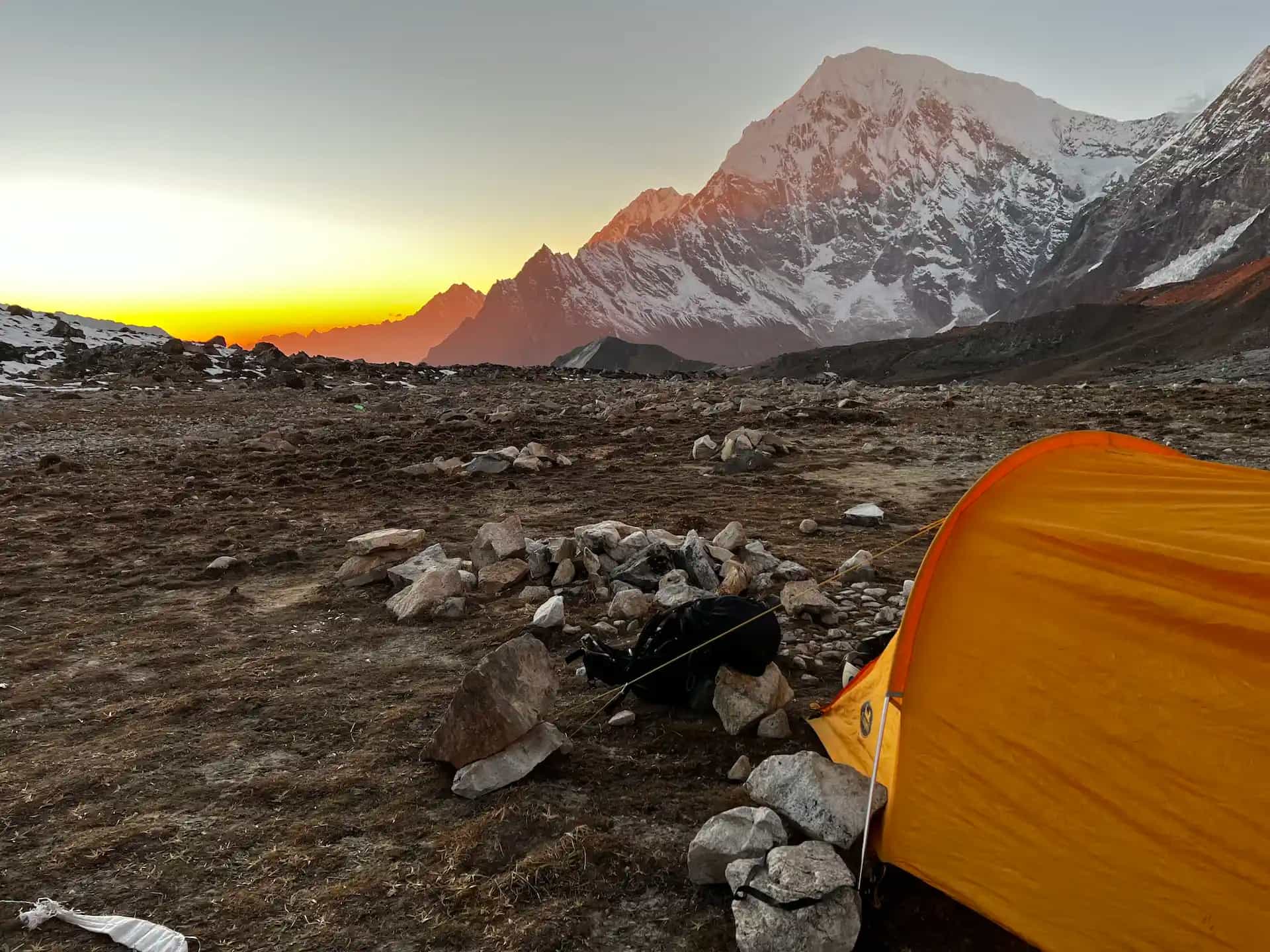
Hiking
Leaving behind the last settlement you'll see for a couple of days, you'll start to trek along the rocky glacial trail. You'll arrive at base camp (4600m) mid-afternoon with plenty of time to settle in, grab a hot drink and marvel at the peak above. Sunset this high up is something to behold, and worth checking out before you gather together in the mess tent for a hearty meal prepared by your crew.
Day 8
Summit day!
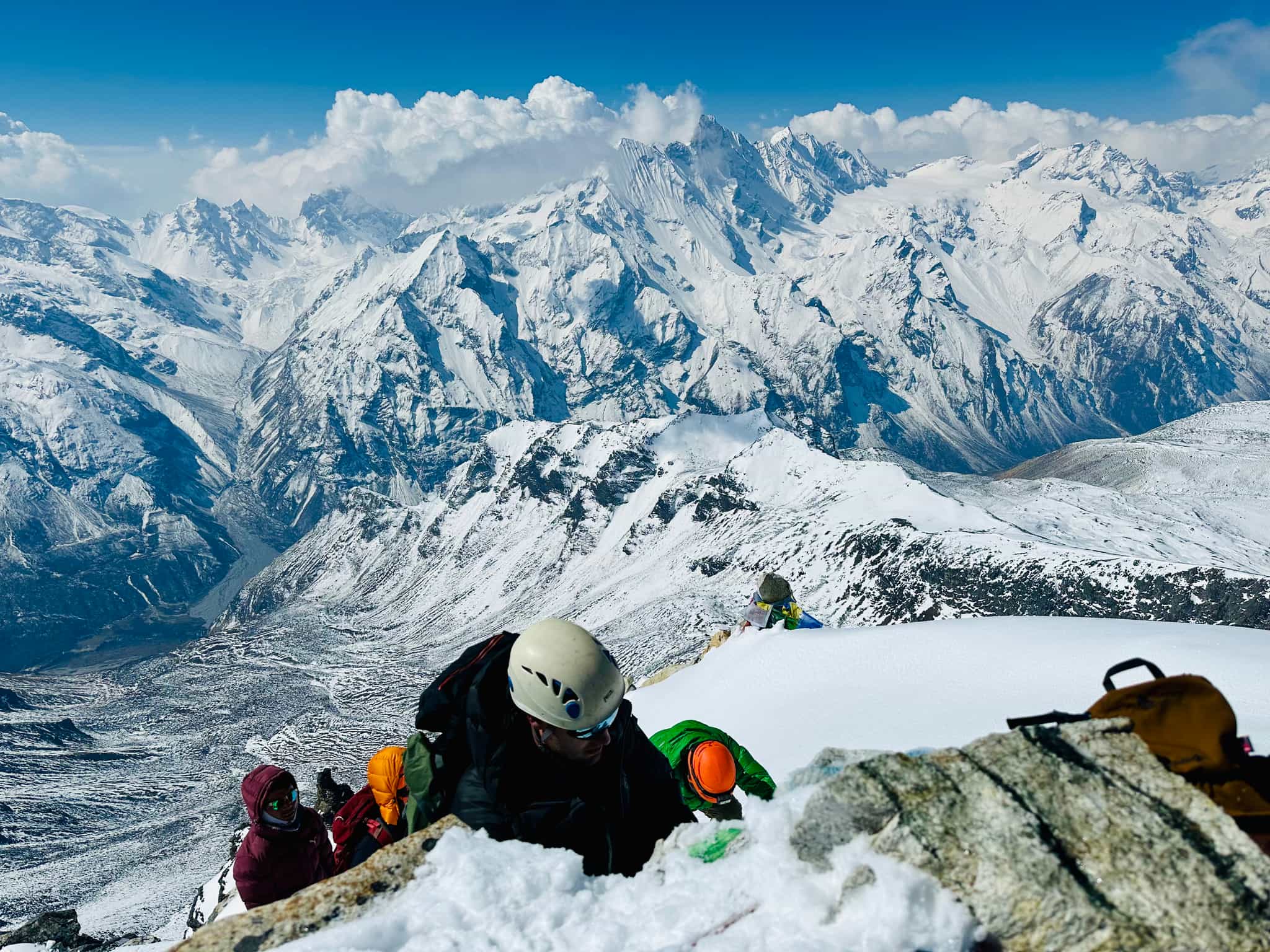
Hiking
Headtorches at the ready as you set off for the summit in the early hours, when conditions are usually at their best. The summit generally takes approximately eight hours, with the last 700m usually needing ropes, crampons and ice axes. You'll make your way along a small ridge to reach the top at 5500m – Yala Peak bagged! Your reward is panoramic views of Shishapangma, Dorje Lakpa, Gangchempo, Naya Kang, Tserko Ri, Langtang Lirung and many other astonishing mountains. After summiting, you'll head back to base camp for a quick refuel before descending back down to Kyanjin Gompa.
Day 9
The long descent to the Lama Teahouse
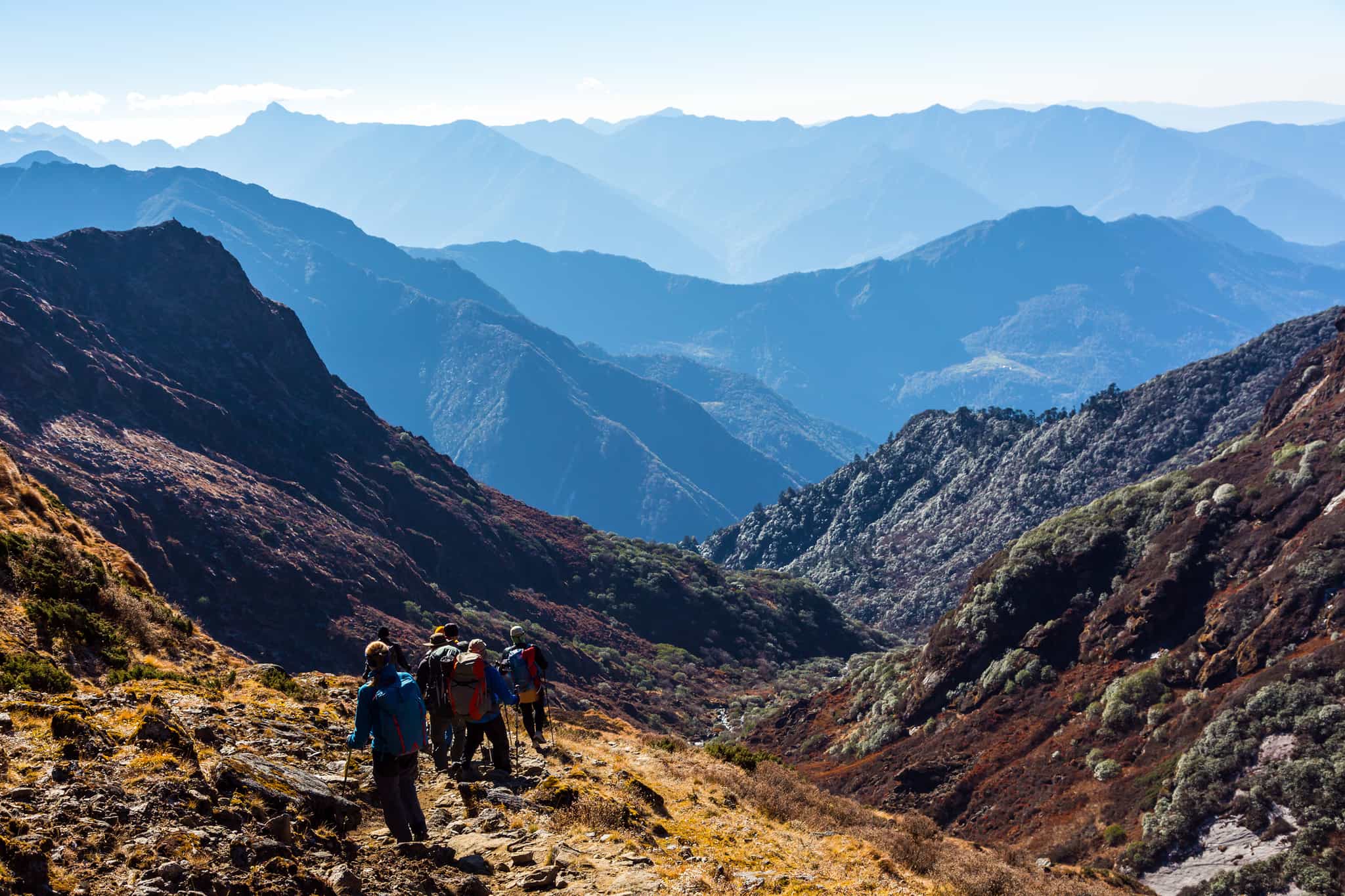
Hiking
With lung fulls of oxygen, you'll hop, skip and jump back down the valley all the way to the Lama Teahouse in Rimche. Now at a sensible altitude to do so, you can grab a local beer and celebrate your achievement!
Day 10
Back to Syabrubesi
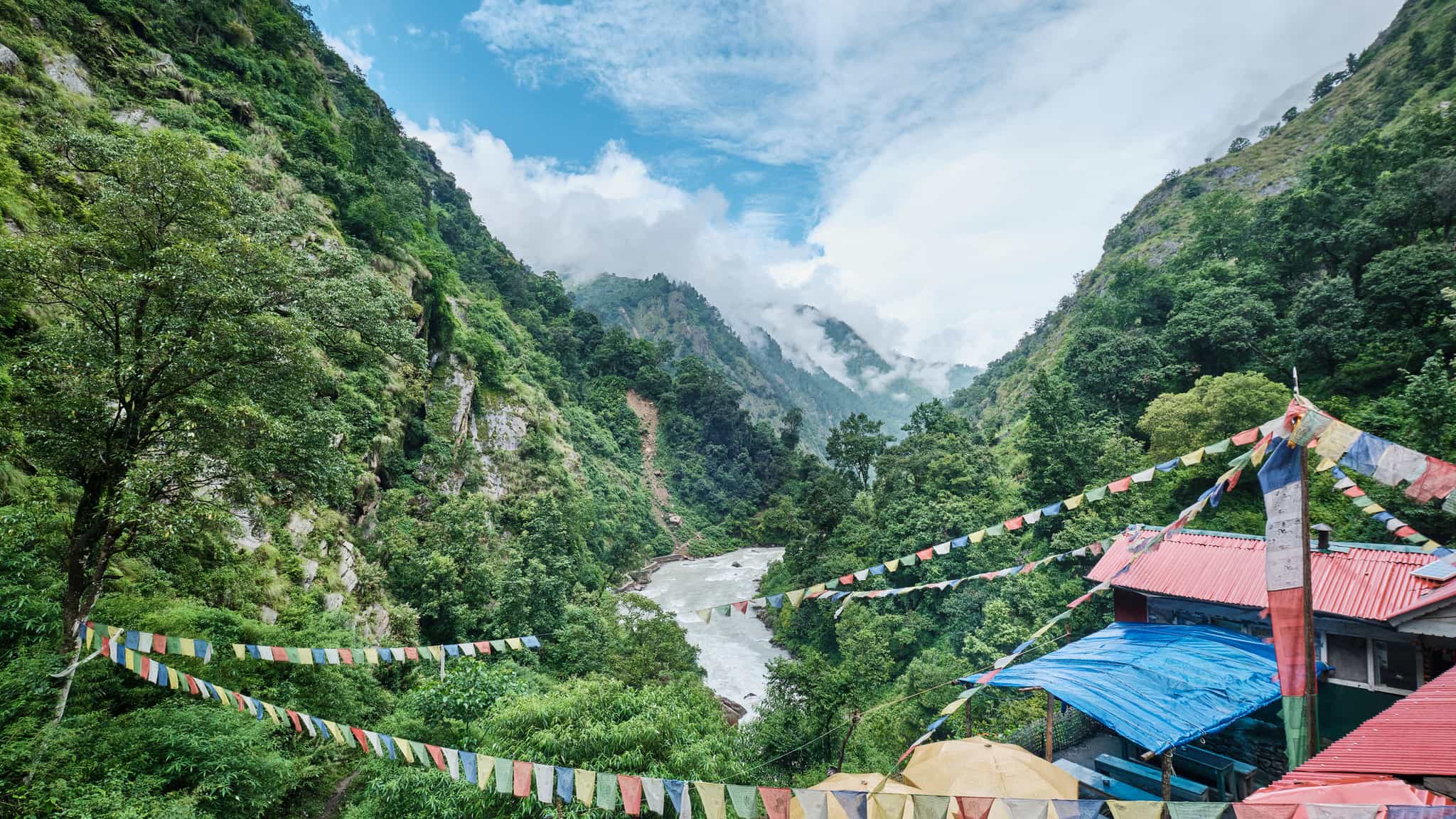
Hiking
It's the last day on the trail today, with an easy walk through the forest, retracing the track past Bamboo and Dovan and onto the overnight spot at Syabrubesi. This small town perched above a river is the perfect place to end your trek and to reflect on your achievement, before saying goodbye to the mighty Himalaya tomorrow.
Day 11
Road trip back to Kathmandu
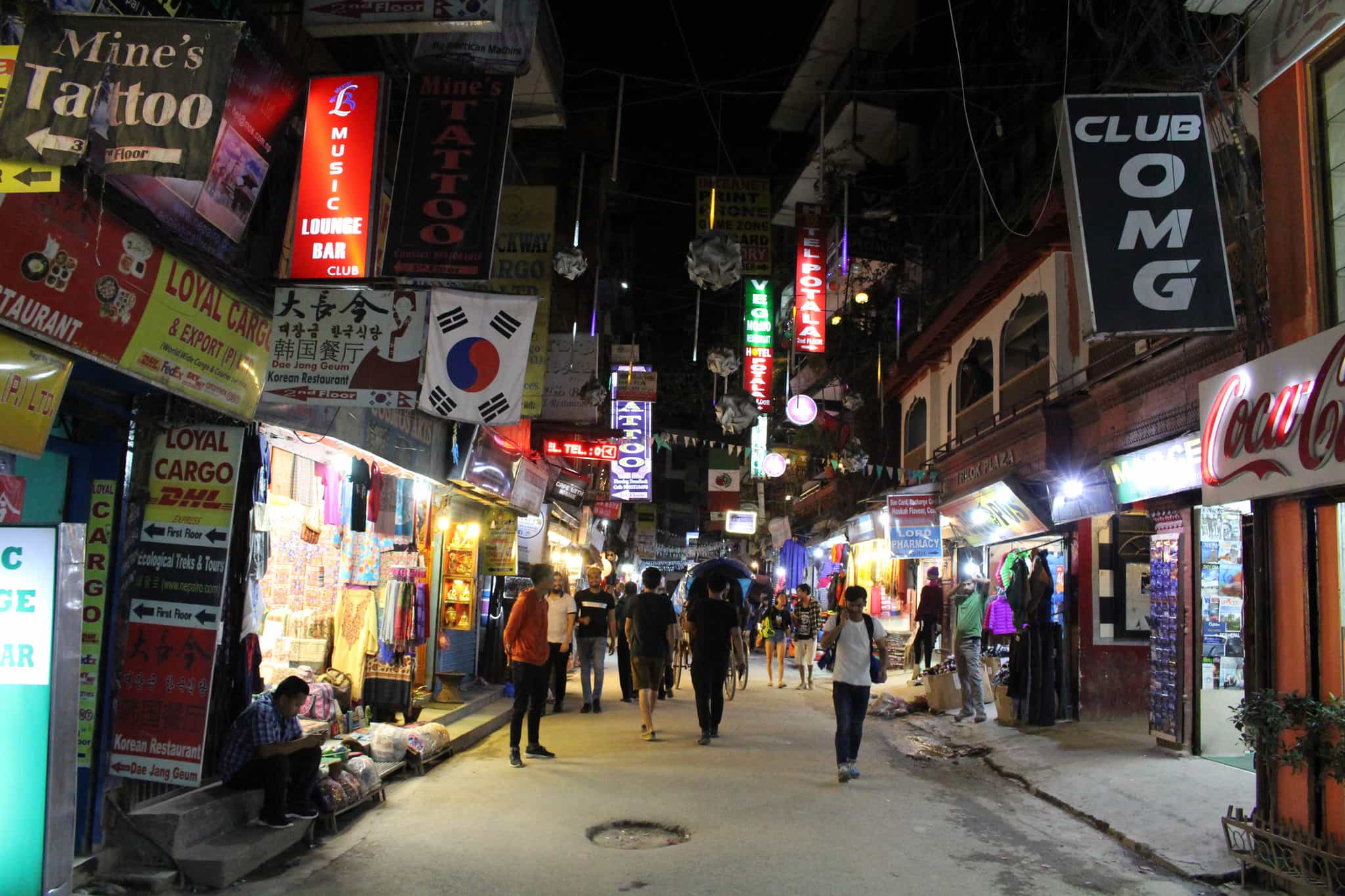
Driving
Jump on the bus back to Kathmandu, where a hot shower and your clean clothes await. You'll be staying right in the centre of Thamel, an area popular with travellers and packed with street food and backstreet bars. Head out for a final group meal and perhaps onto a local cocktail bar for a final celebratory nightcap.
Day 12
Last day in Kathmandu
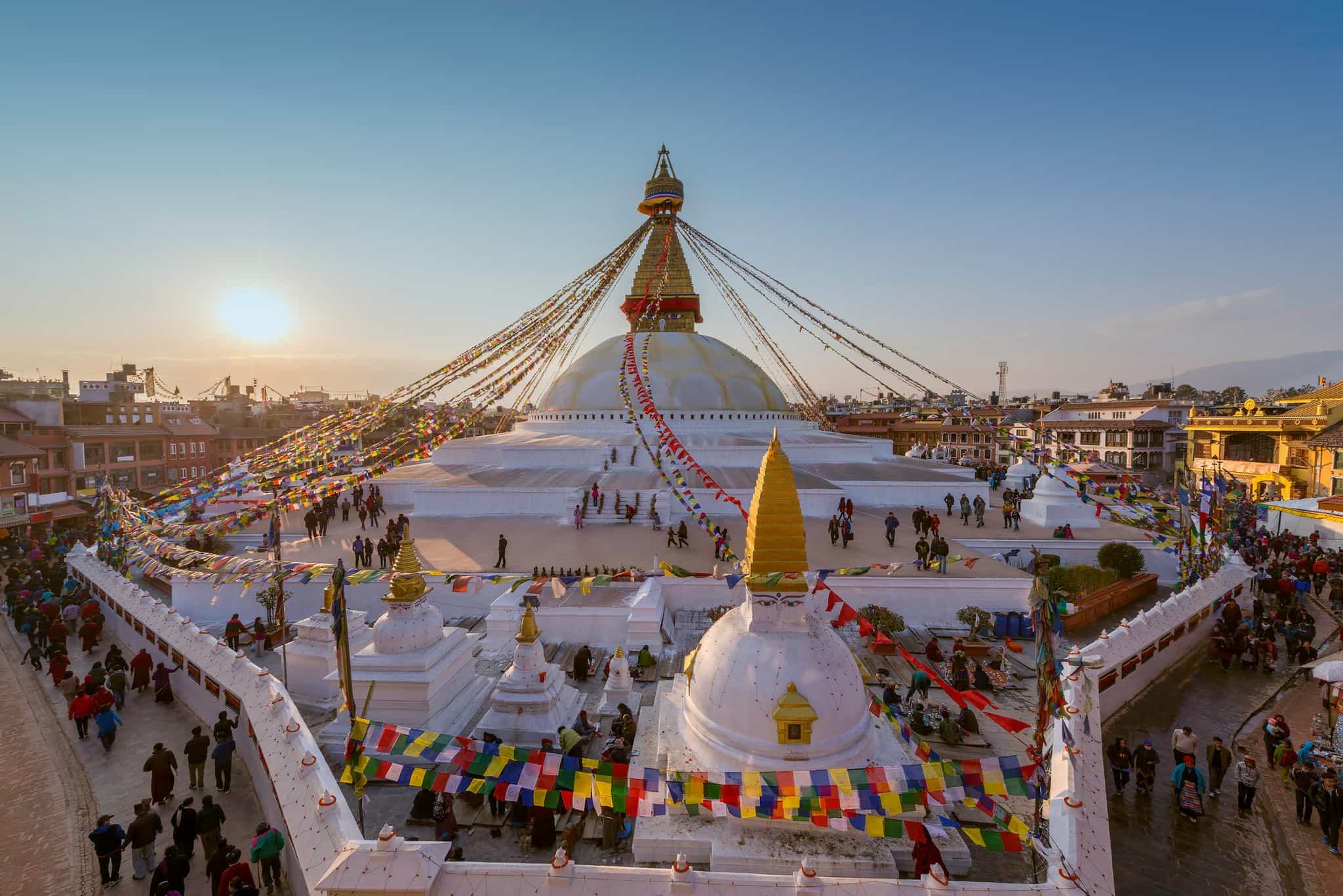
Enjoy a well-earned lie in and breakfast at your hotel, then spend your last day exploring the city before heading back to the airport, and reality.
Day 1
Breakfast
Lunch
Dinner
Day 2
Breakfast
Lunch
Dinner
Day 3 – Day 6
Breakfast
Lunch
Dinner
Day 7
Breakfast
Lunch
Dinner
Day 8
Breakfast
Lunch
Dinner
Day 9 – Day 10
Breakfast
Lunch
Dinner
Day 11
Breakfast
Lunch
Dinner
Day 12
Breakfast
Lunch
Dinner
What is the food like?
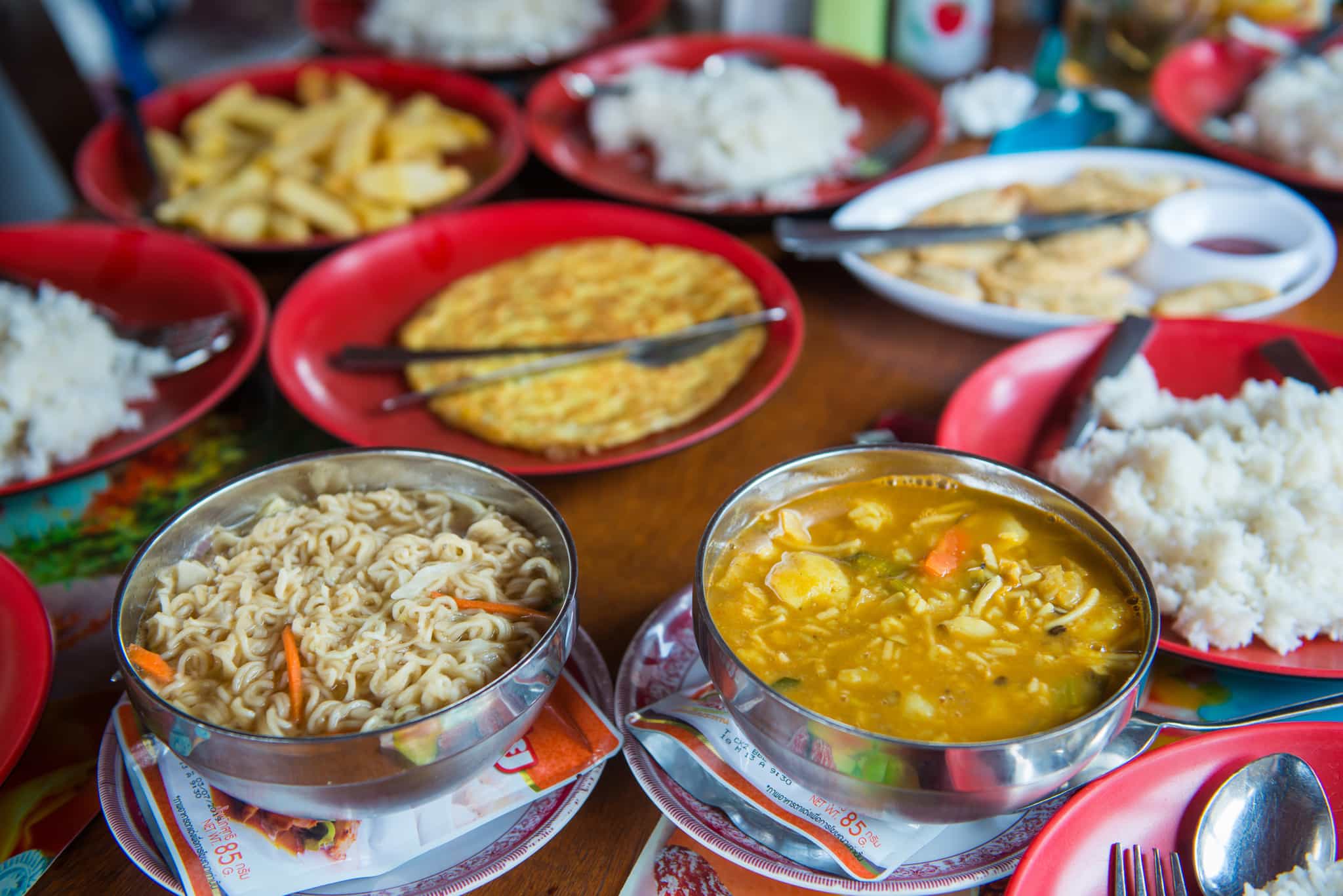
Breakfast is usually either hot porridge, muesli or Tibetan bread served with an omelette or boiled eggs. The menus in each of the teahouses are very similar, and there will usually be a choice of traditional Nepalese dhal bhat (a mixed plate of lentils, rice, vegetables and pickles – delicious and healthy), momos (Nepalese dumplings), mixed noodles, pasta or even pizza. Although meat is available at some teahouses, we suggest you ask your guide for advice about eating it – it tends to depend on how far it has travelled, as to whether or not it is a safe option.
Dairy-free, vegan or vegetarian diets can be catered for while trekking although meals may get a bit repetitive – dhal bhat will likely be your go-to staple. Gluten-free/coeliac diets are tricky to cater for on teahouse treks: beware that powdered soups and seasonings used often contain gluten, and cooking oil is commonly reused and may cause cross-contamination. Please explain your dietary requirements to your guide so that they can assist when ordering, and bringing along some extra food/snacks is advisable.
What is the accommodation like?
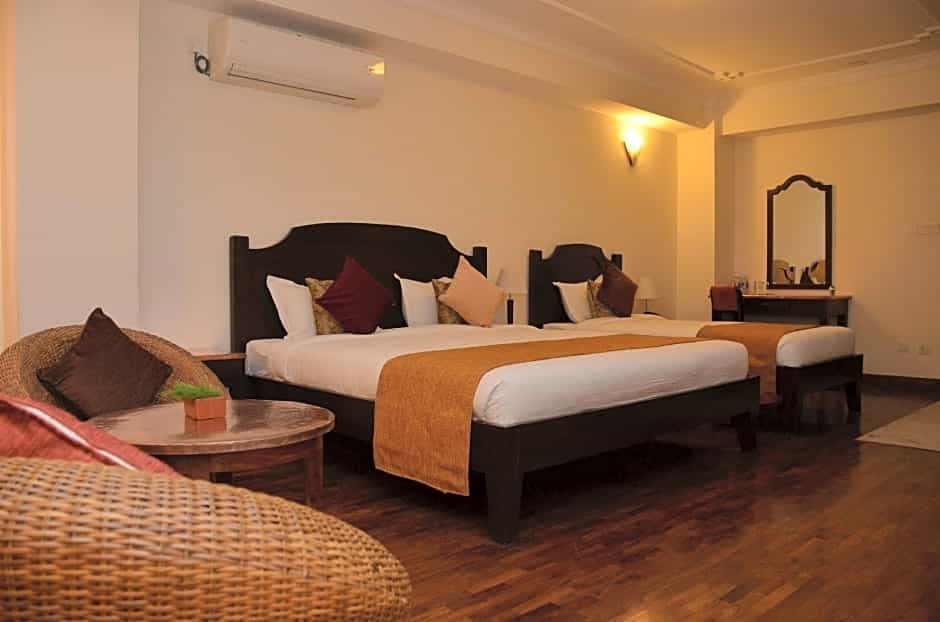
In Kathmandu
You’ll stay in a centrally located tourist hotel in the heart of Thamel (such as the Hotel Holy Himalaya, or one of a similar standard), close to the main shopping area and heritage sites. You will stay in twin-share rooms.
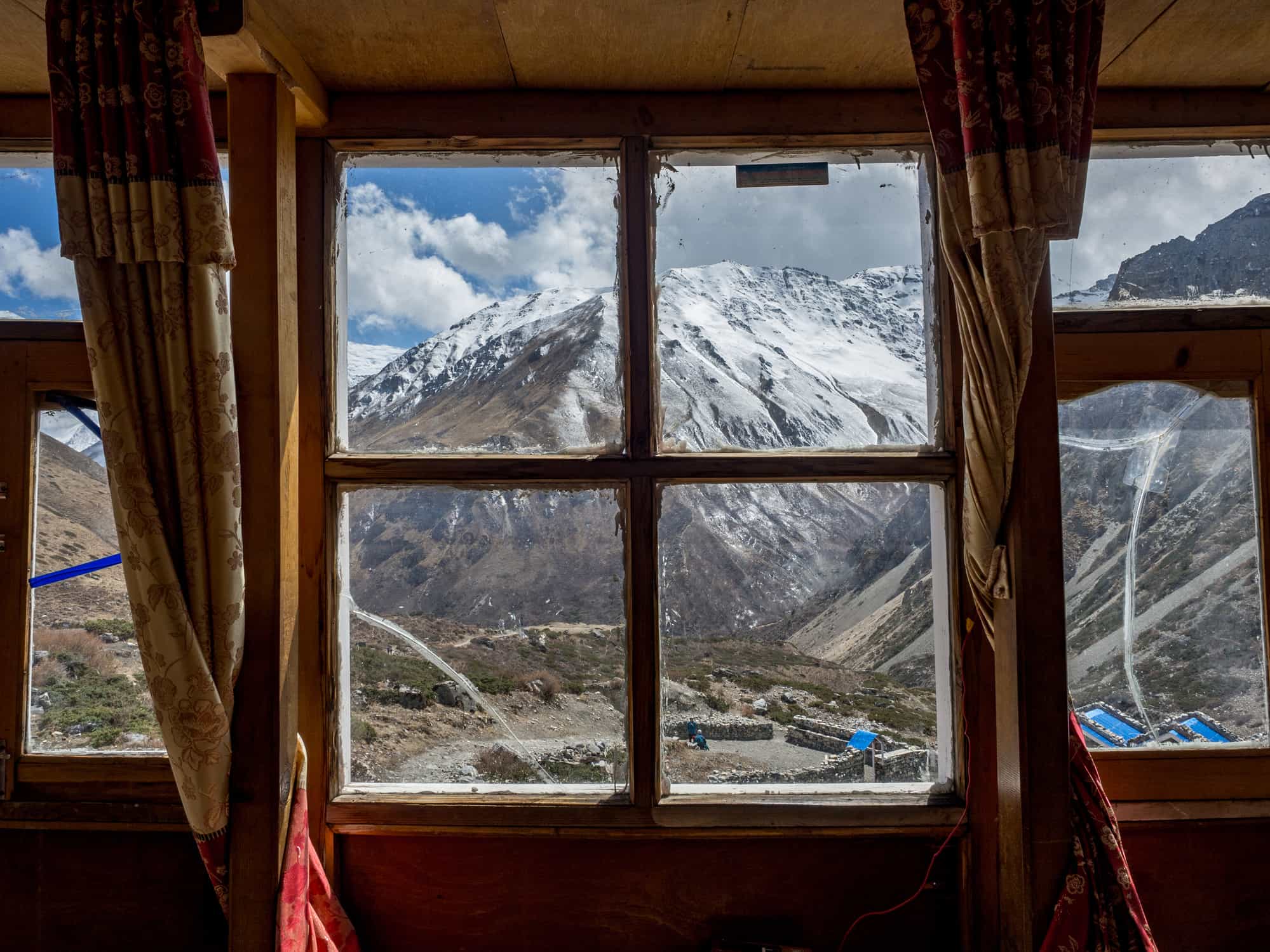
On the trek
Generally, most adventures to Nepal are based in remote areas where the accommodation will be basic. On the trek you will stay in teahouses most nights – these are mountain lodges that tend to have a communal dining area and basic toilets. The rooms are usually twin-share sorted by gender, however, if there is an odd number in the group they may occasionally be mixed. There’s no heating so you'll need your warm sleeping bag. WiFi and hot showers are often available at a small cost. You can usually charge your phone up – again, you guessed it, for a cost – so remember to take an adapter.
You'll also spend one night in a twin-share dome tent at Yala Peak Base Camp. All your camping kit is provided, but you might wish to pack a small inflatable pillow.
Upgrades
For solo travellers looking for their own space a private room can be booked, please see Optional Extras for pricing. Please note, this is only possible for the two nights in Kathmandu and is subject to availability. Please request this at the time of booking.
This trip has been rated as Tough
Much of the trek is within the capabilities of people with good fitness and stamina who are keen and experienced trekkers. Still, it is important to note that trekking at altitudes above 3000m (10,000ft) is more demanding on the body than walking at low elevations. Some training beforehand will help and we advise doing at least one weekend of back-to-back days walking. The guide will set the pace and as with all treks at altitude, the approach is ‘slowly, slowly’ to help you adjust.
The ascent of Yala Peak is non-technical so you do not need previous mountaineering or high-altitude climbing experience. You will, however, summit using ropes, crampons and an ice axe – you will learn the basics and practice using these while hiking on the previous days, and there will be plenty of time to go through these skills with your guide before you start the summit attempt. It may be that you use these items for a short period only or for a couple of days as you approach the summit, the weather is highly changeable so you will prepare early on in the trek to ensure you feel confident with the ascent. Overall, the climbing day will still feel challenging due to the rapid altitude gain and the terrain during the summit push, so good stamina and preparation is crucial.
What will I need to carry?
There will be one porter for every person. They will each carry up to 20-25kg of kit (including your climbing gear), so your overnight bags will be transported for you. Please pack no more than 15kg per person of personal clothing/items (including your sleeping bag) in a soft backpack or duffel bag, allowing for the climbing equipment to make up the remainder of the porter's weight limit. You will only need to carry a daypack with essentials in it (extra layers, snacks, water, suncream, camera etc).
There are two key seasons for trekking Yala Peak in Nepal:
Pre-Monsoon/Spring (March-May): Temperatures rise significantly in spring and flowers are in full bloom in the lower lands. Although it can still drop below freezing at night, the daytime temperatures tend to sit between 10-15°C.
Post-Monsoon/Autumn (Sept-Nov): This is the most popular time to trek in Nepal with sunny and mild days generally. It can get cold and windy at higher altitudes, however skies are usually clear.
Snow is likely in early March and late November but for other dates later in Spring and earlier in Autumn, it will be less prevalent. If there is minimal or no snow, the summit will be approached as more of a scramble than a snowy hike, so crampons and ice axes won't be needed. Of course, mountain weather is notoriously hard to predict and snow can be expected on any trip, so all the kit will travel with you in case it is needed.
The Area
Logistics
Starts
Kathmandu Airport (KTM)
Arrive by 16:00 on Day 1
Ends
Kathmandu Airport (KTM)
Any time on Day 12
Transfers
Airport arrival and departure transfers are included no matter when you arrive and depart (even if booking extra nights before or after the trip), provided you have completed your passenger information form and have supplied your flight details in advance. On Day 1, your tour leader will arrange a group briefing before a welcome dinner, so we strongly encourage you to book a flight landing by 16:00 in order to be able to join this on time.
Travel options
There are regular flights to Kathmandu from major airports in the UK, Europe and North America.
Enjoy 12.5% Off Outdoor Gear
In need of a few more items? All bookings receive a 12.5% discount to use at Cotswold Outdoor, Snow + Rock and Runner's Need.
What's provided?
- All climbing equipment: ice axe, ascender, descender, climbing helmet, harness, carabiners, crampons (ice axes and crampons are generally only required on winter climbs from December to March, but your porter will carry them just in case). Please note, you'll need to bring your own climbing boots (see shoes section below).
- Whilst a harness is always provided locally and included in the trip equipment, if you happen to have your own it is better to bring it to ensure the best comfort and fit.
What do I need to bring?
- Day pack with rain cover (35 litre +)
- Rucksack or duffle bag (for the porters to carry your overnight kit)
Clothes
Mountain environments are notoriously unpredictable. A layering system works best so that you can put on and remove items to adjust your temperature. You'll need to be equipped for all eventualities, although you won't necessarily need to use everything if you're lucky with the mountain conditions.
- Waterproof jacket (windproof)
- 3- to 4-season down jacket, with hood
- Waterproof and windproof overtrousers
- Lightweight trekking trousers
- Thermals (top and bottom, wool or synthetic)
- 2/3 trekking t-shirts/shirts
- Fleece or warm mid-layer
- Warm gloves
- Hiking socks and merino liners
- Woolly hat
- Sun hat/cap
- Spare underwear
- Buff or similar
- Something to sleep in
Shoes
- Worn-in, waterproof hiking boots (with ankle support). While B1 boots (crampon compatible) are suitable for the climb, they are not good enough for extreme weather conditions. It is recommended to contact your host at least one month prior to your trip for specific guidance on the appropriate footwear. If you do not already have B2 boots and are thinking of purchasing them, climbing enthusiasts may find it beneficial to invest in B2 boots. However, if you prefer not to make the purchase, renting B2 boots in Kathmandu is also a viable option.
- Lightweight trainers (for the evenings)
- Flip-flops or sandals
Sleeping
- 4-season sleeping bag with hood (with a comfort rating down to around -20°c)
- Sleeping bag liner (a good liner can add a few degrees extra warmth)
- Pillowcase (optional)
Other
- Trekking poles
- Travel towel
- Sun protection and lip balm (high SPF: 50+)
- Sunglasses (UV blocking, ideally with a 'wrap-around' design)
- 2 x 1-litre water bottles (metal SIGG bottles can double up as hot water bottles at night)
- Headtorch (LED recommended)
- Earplugs (for the teahouses)
- First aid kit and/or personal medication
- Water purification tablets/system
- Biodegradable wet wipes
- Hand gel
- Small biodegradable bags to take toilet tissue off the mountain
- Toilet paper/tissues
- 1 x passport photos for trek permits
- Powerbank/solar charger
- Universal plug adaptor
- Book/Kindle/cards for downtime
Please remove all unnecessary packing before you leave home and ensure you take all plastic off the mountain to be disposed of in Kathmandu.
What's available to hire?
The below can be rented in Kathmandu:
- Down jacket: approx. $1.5/day with a deposit of $50
- Sleeping bag (3-season only available): approx. $2/day with a deposit of $80
(Please ask your host if this is needed so they can assist you with how to arrange the hire.)
What can you buy in Kathmandu?
Kathmandu has many outdoor gear shops - some with kit that is the same price you will find it at home and some are filled with cheaper imitation gear that may not be of the same quality. You will, however, find a soft duffel bag easily that the porters can carry.
Weight restrictions
There will be one porter for every person on this trip. They will each carry up to 20-25kg of kit (including your climbing gear). Please pack no more than 15kg per person of personal clothing/items (including your sleeping bag) in a soft backpack or duffel bag, allowing for the climbing equipment to make up the remainder of the porterage limit. You will only need to carry a daypack with essentials in (an extra layer, snacks, water, suncream, camera etc).
Optional Private Room Upgrade (Kathmandu x 2 nights)
Payable Before Departure
Optional Private Room Upgrade (Kathmandu x 2 nights)
…
Pre/post-trip accommodation in Kathmandu (Single)
Payable Before Departure
Pre/post-trip accommodation in Kathmandu (Single)
…
Pre/post-trip accommodation in Kathmandu (Twin/Double)
Payable Before Departure
Pre/post-trip accommodation in Kathmandu (Twin/Double)
…
Classic trek with a mildly
Classic trek with a mildly technical peak added on. Well-organized local hosts
Our Purpose
To protect our world's wild places, one adventure at a time.
Positive impact adventure travel

